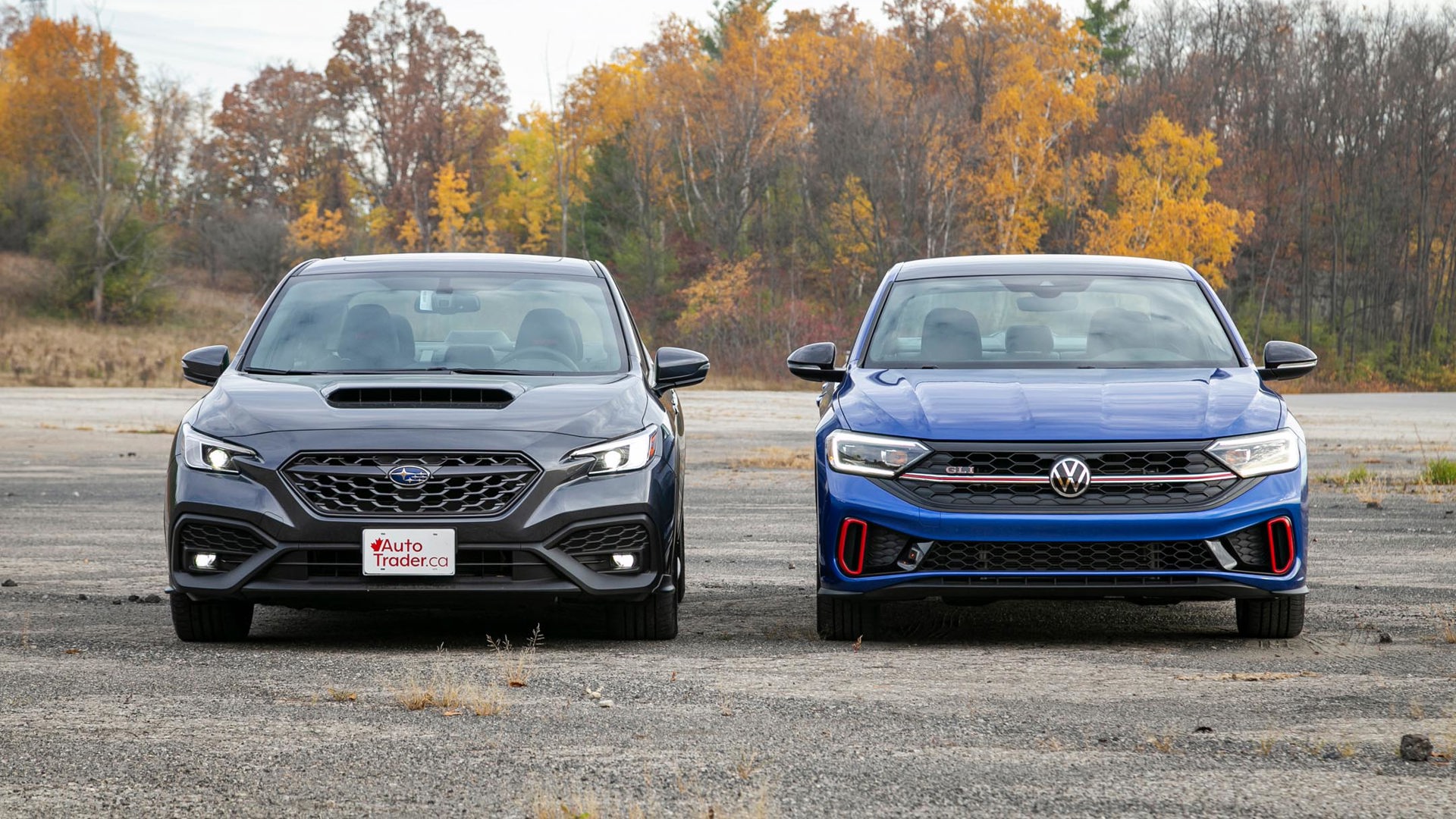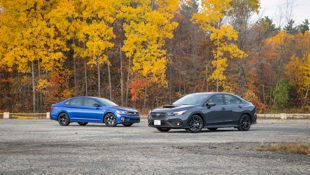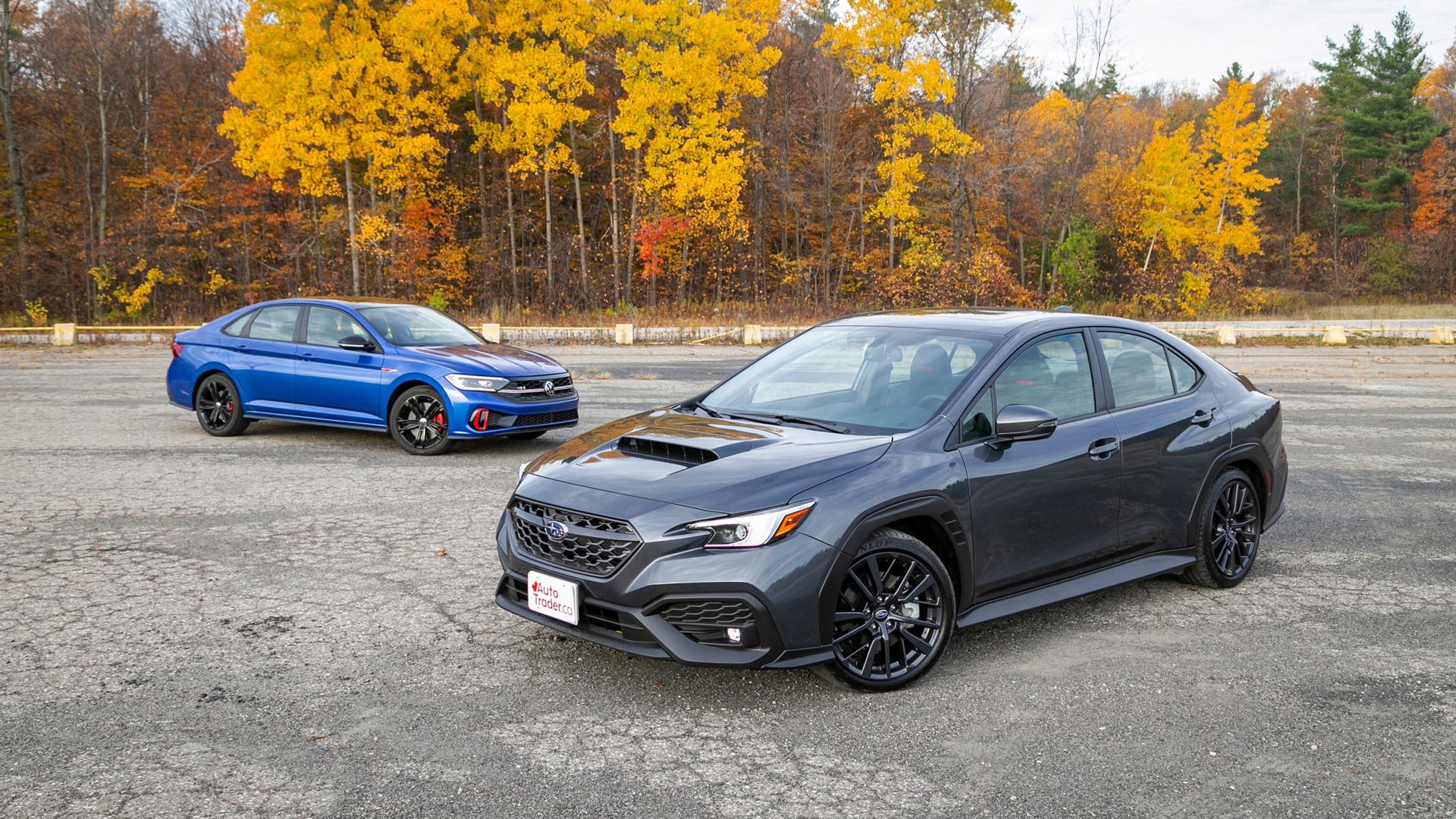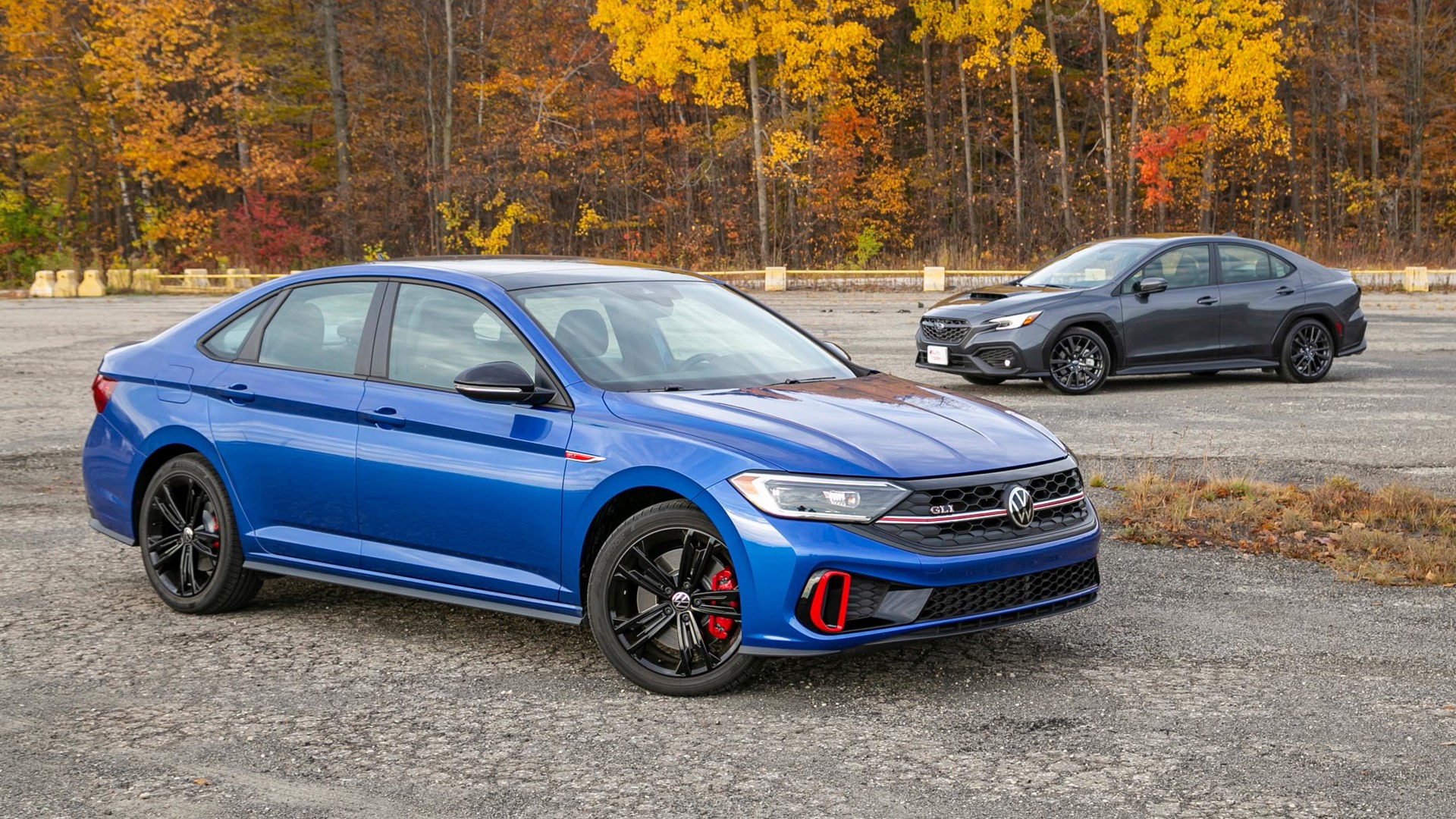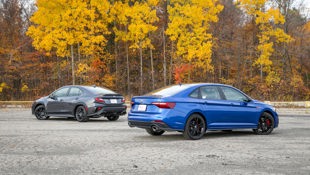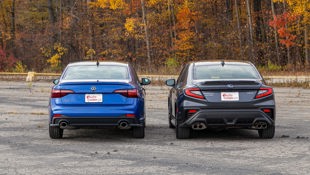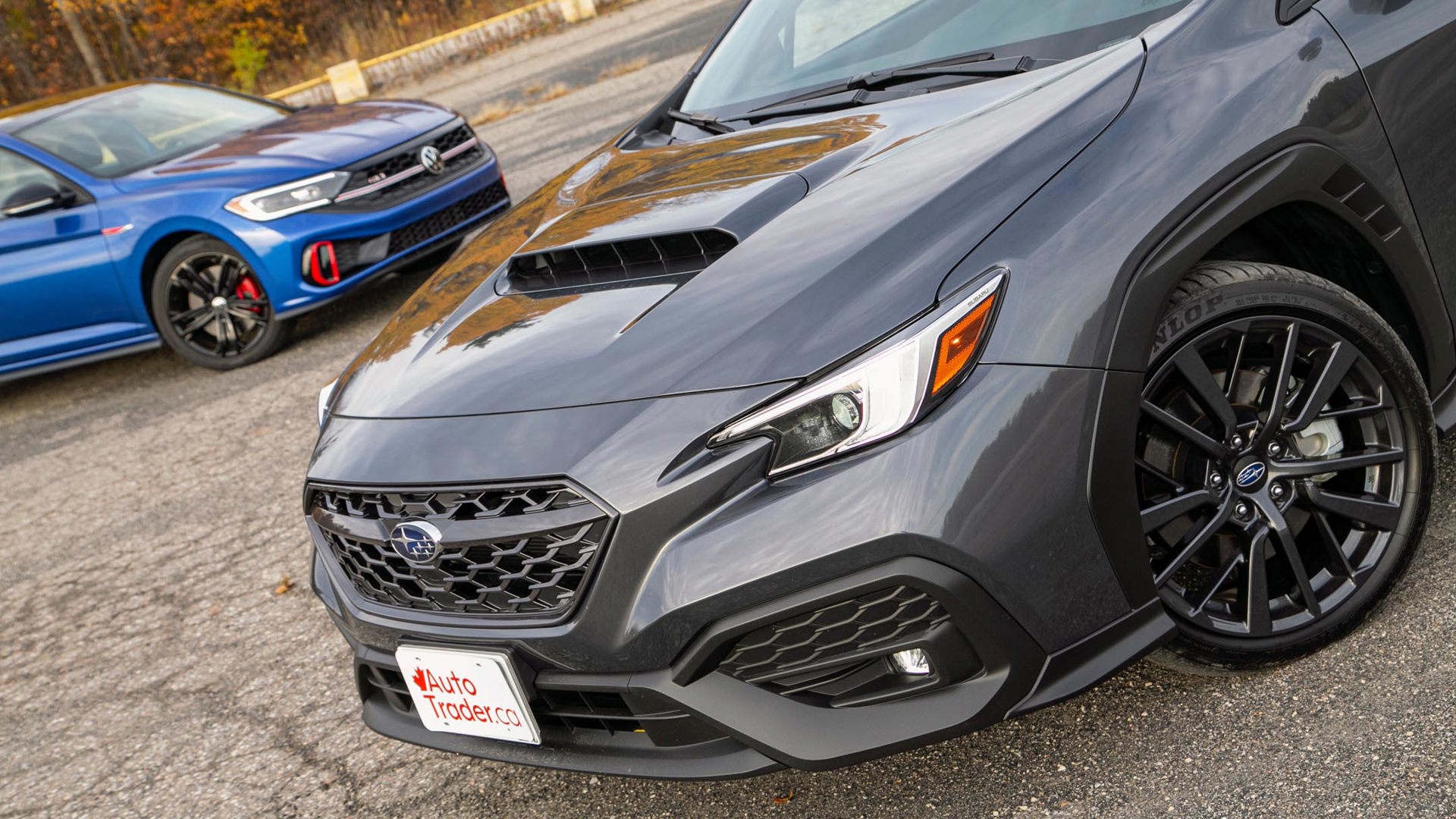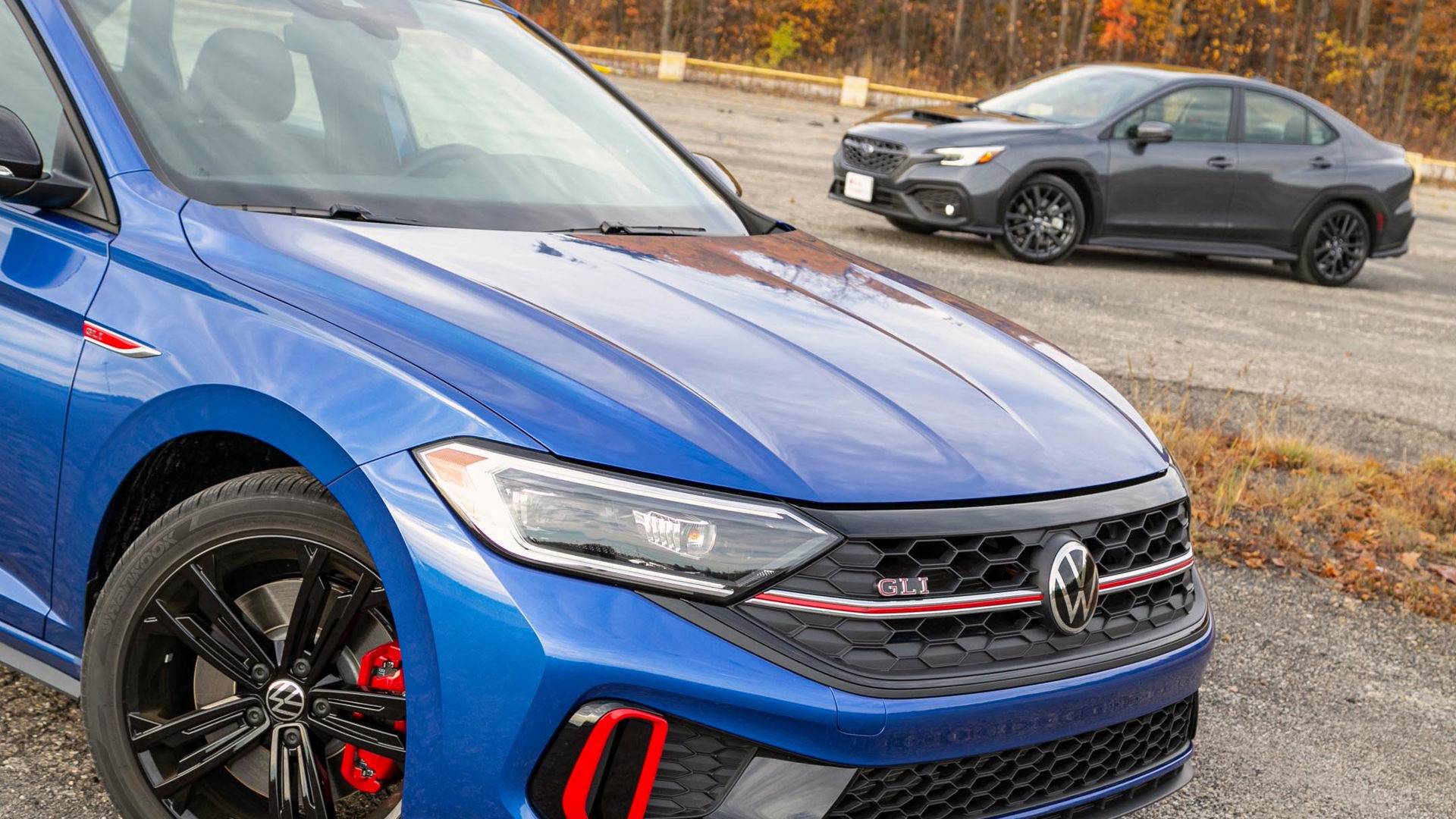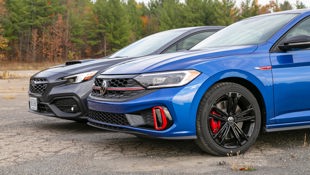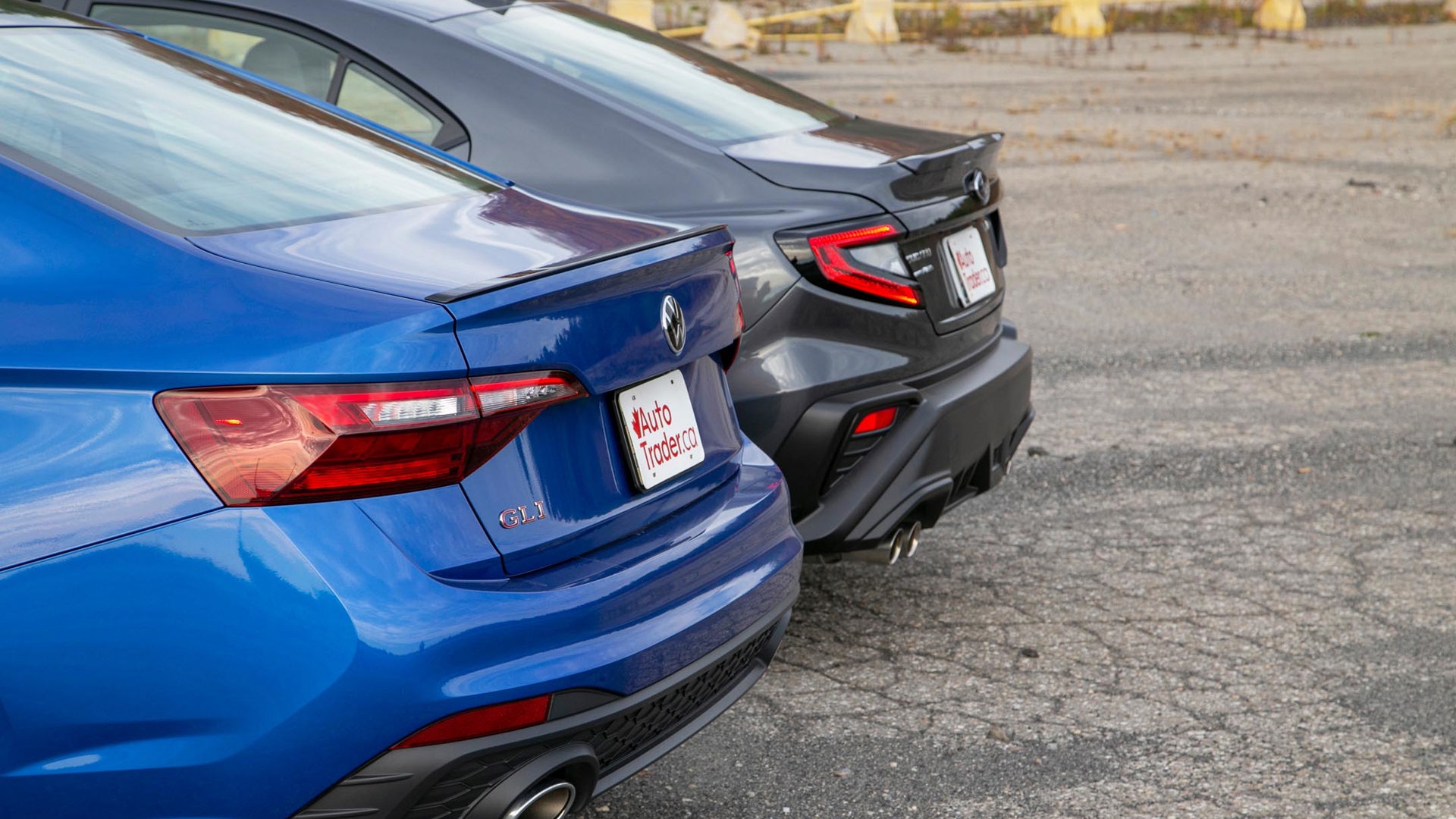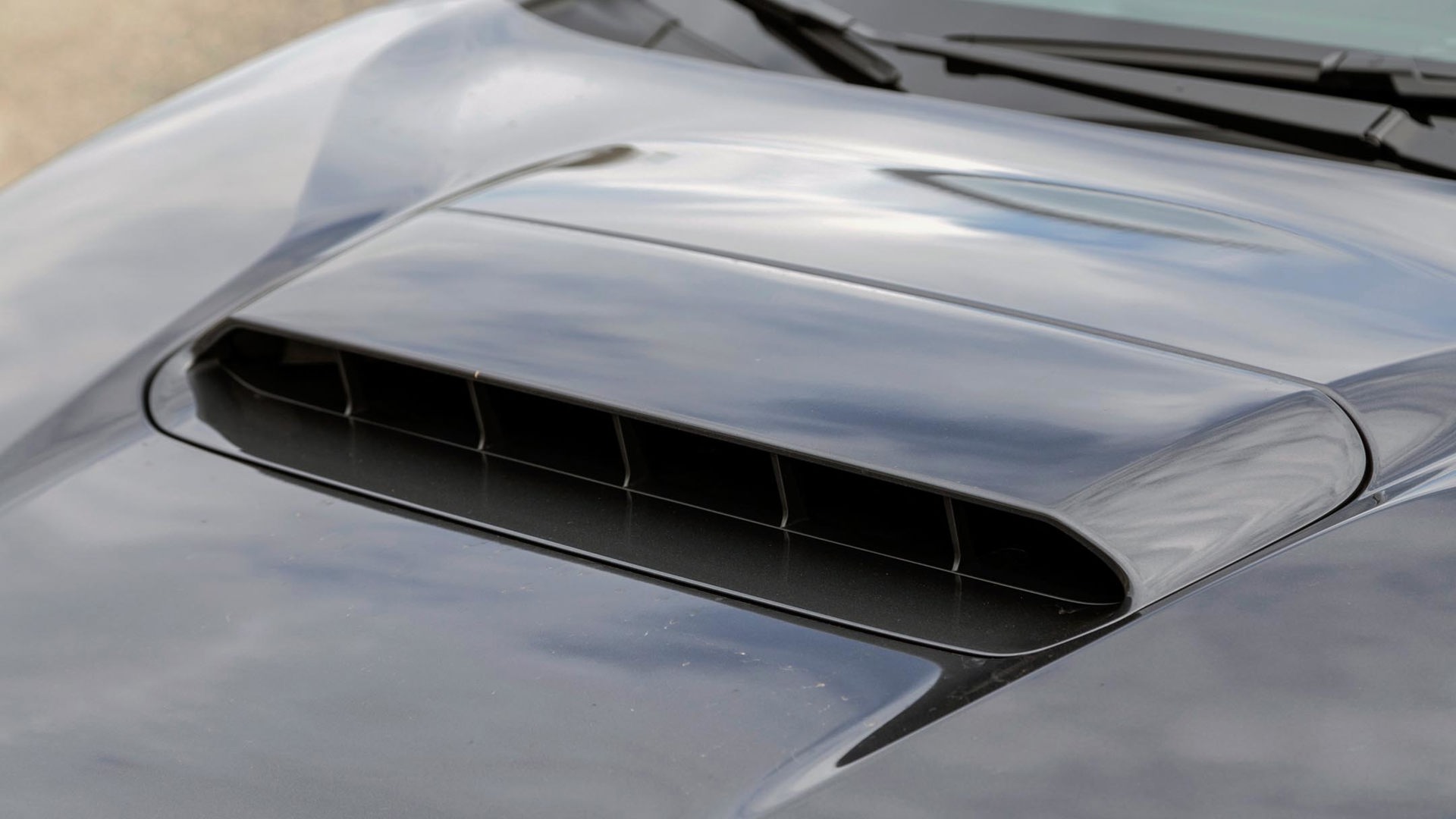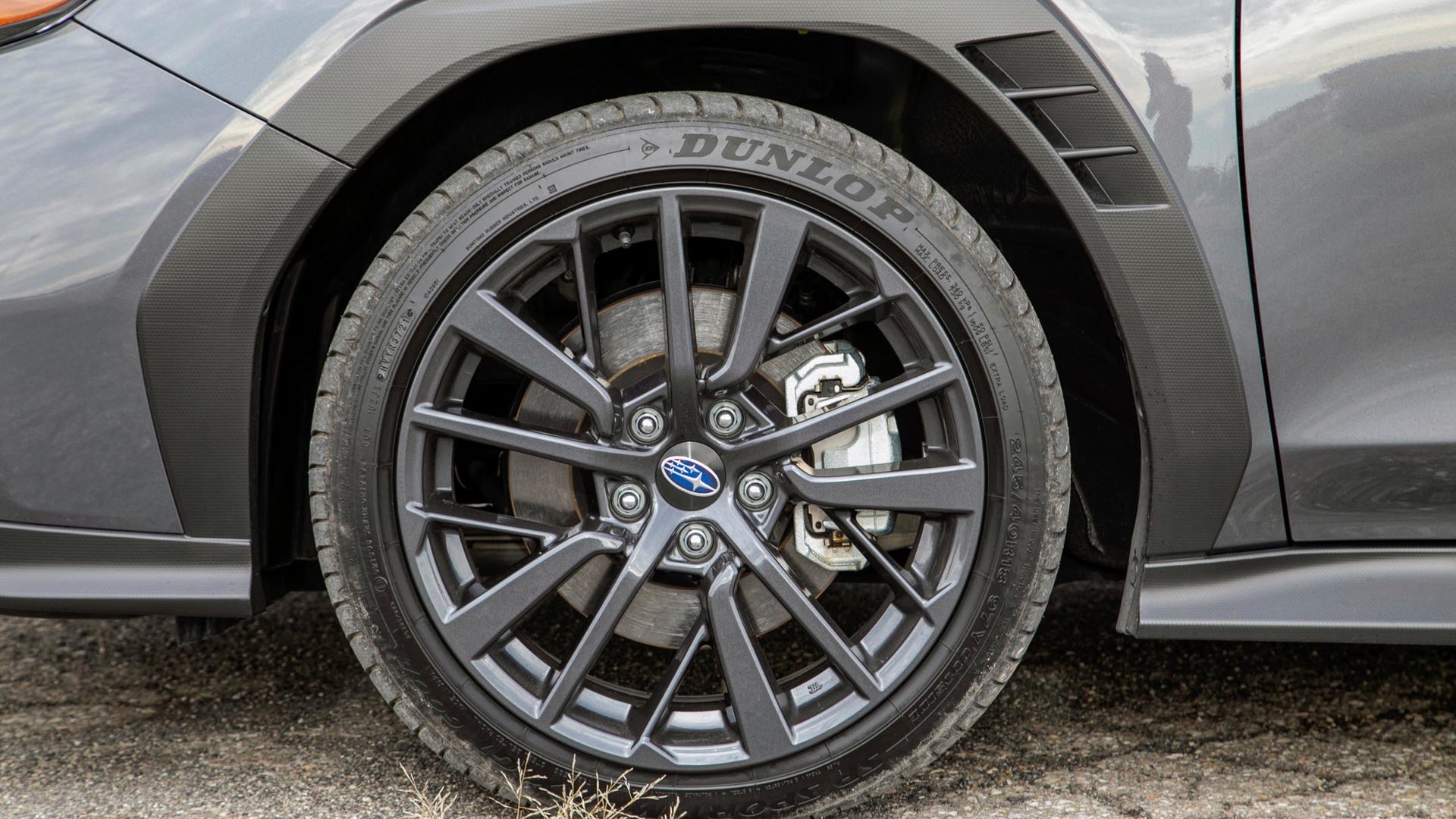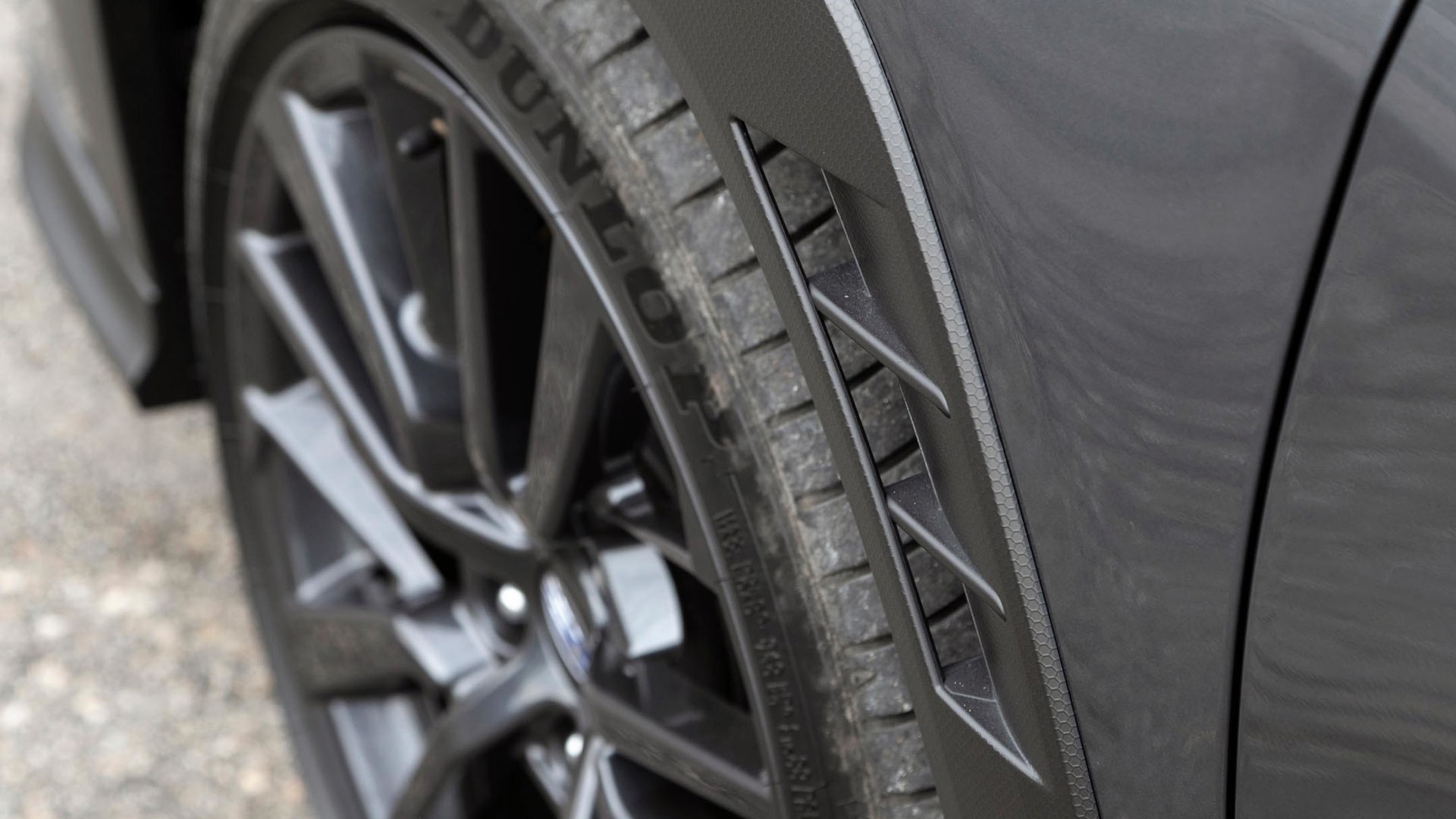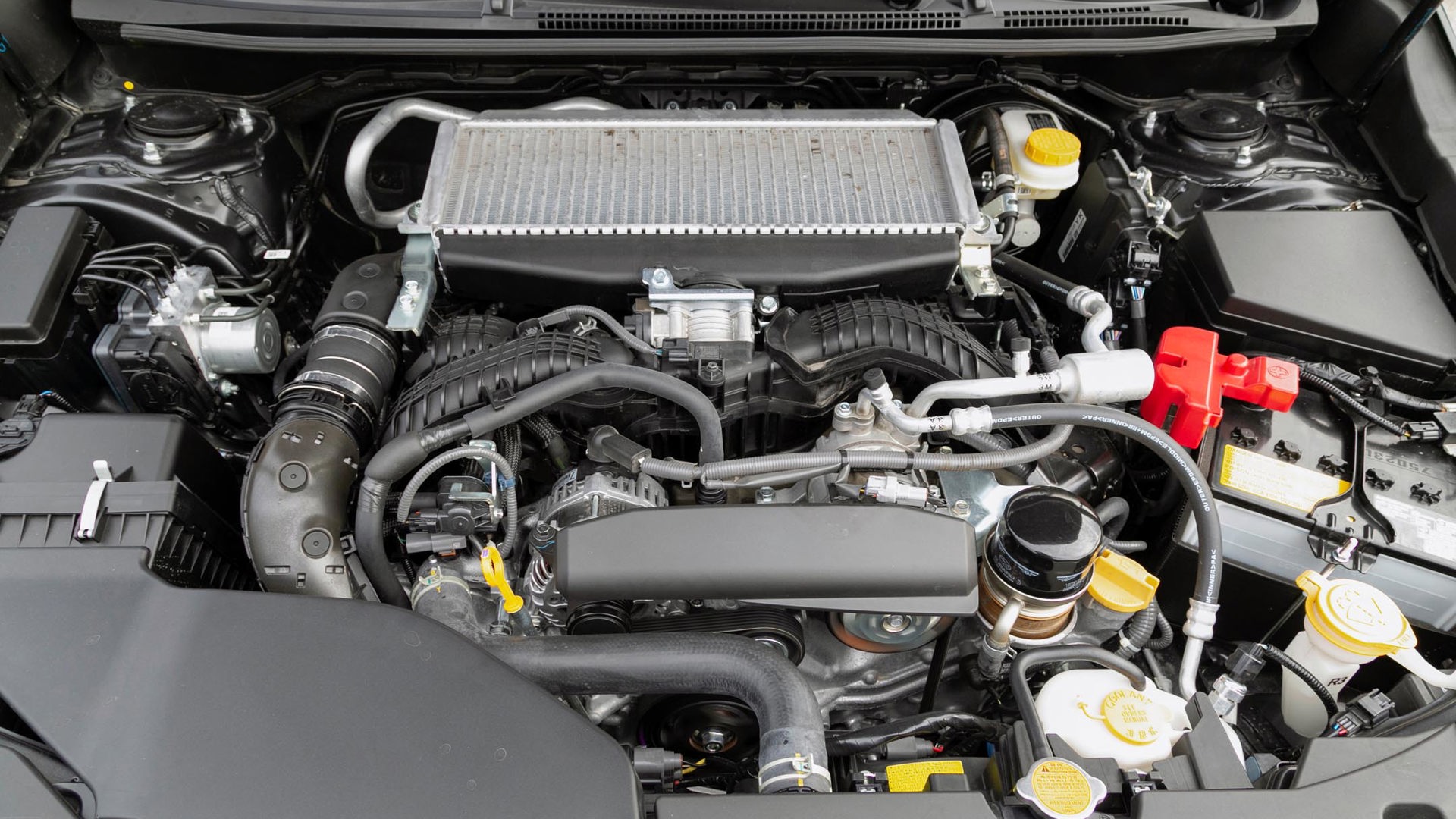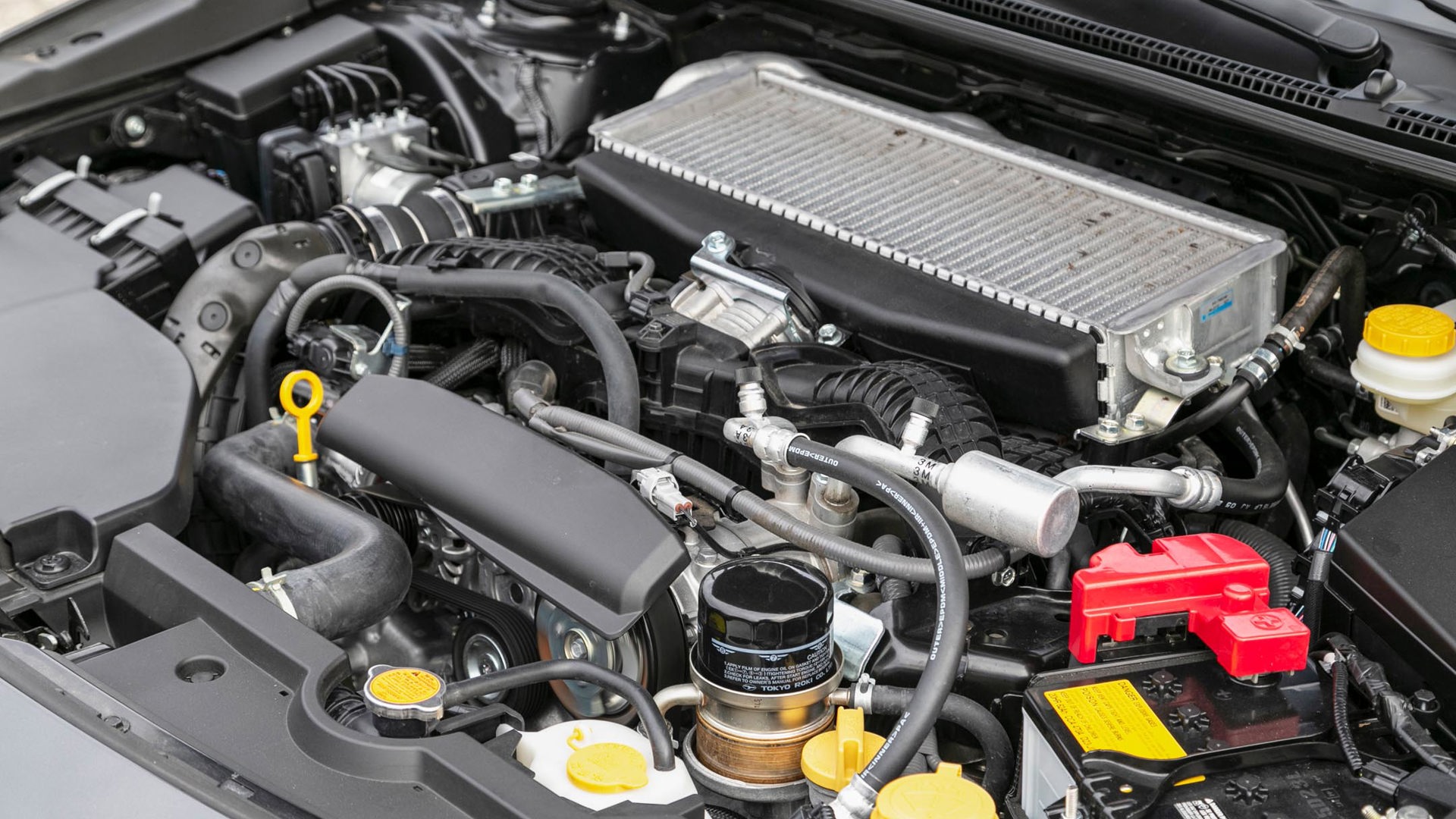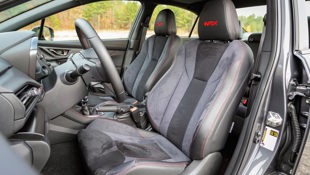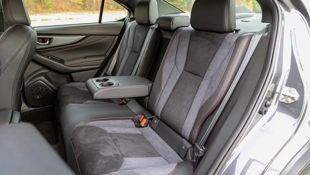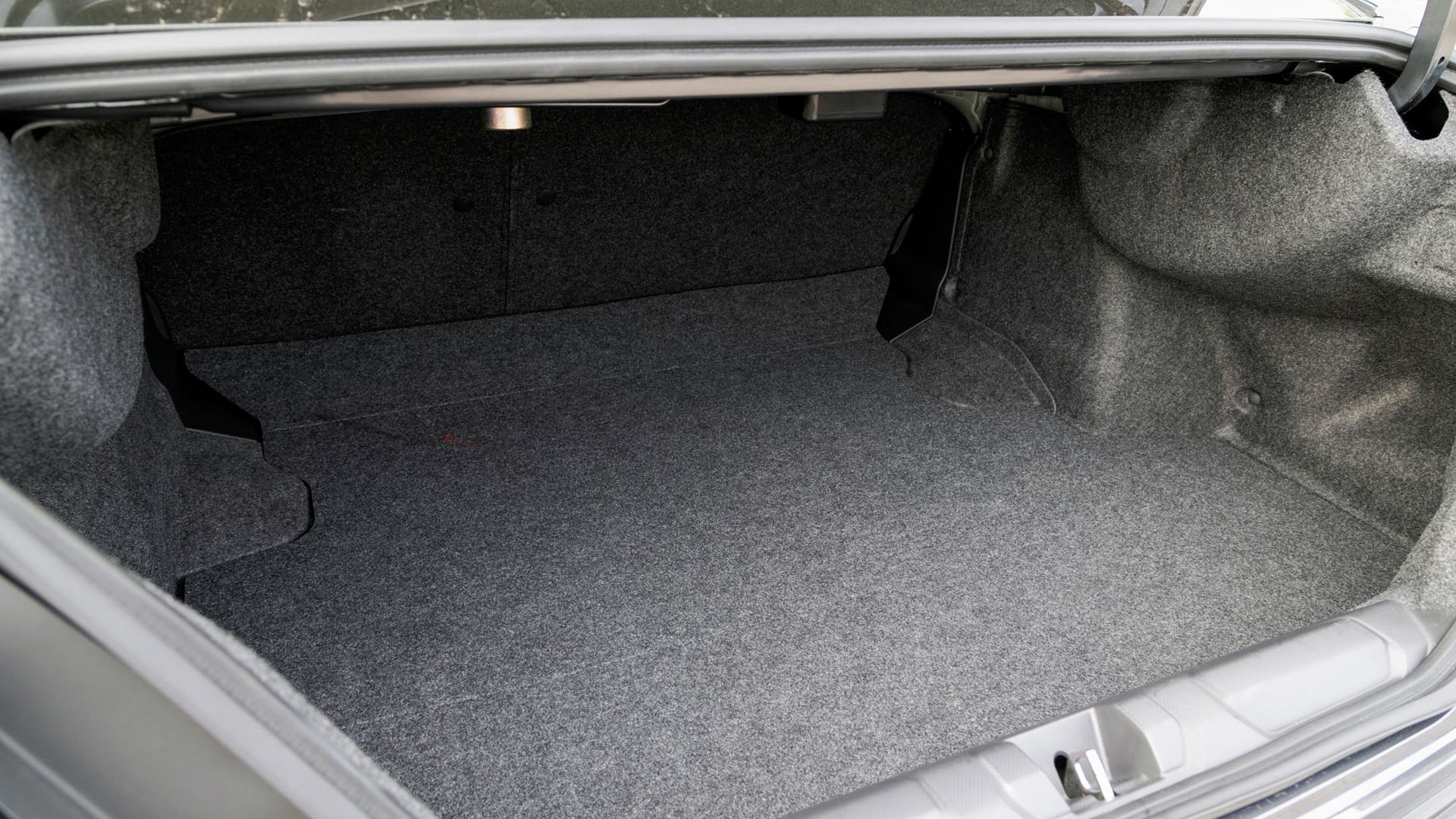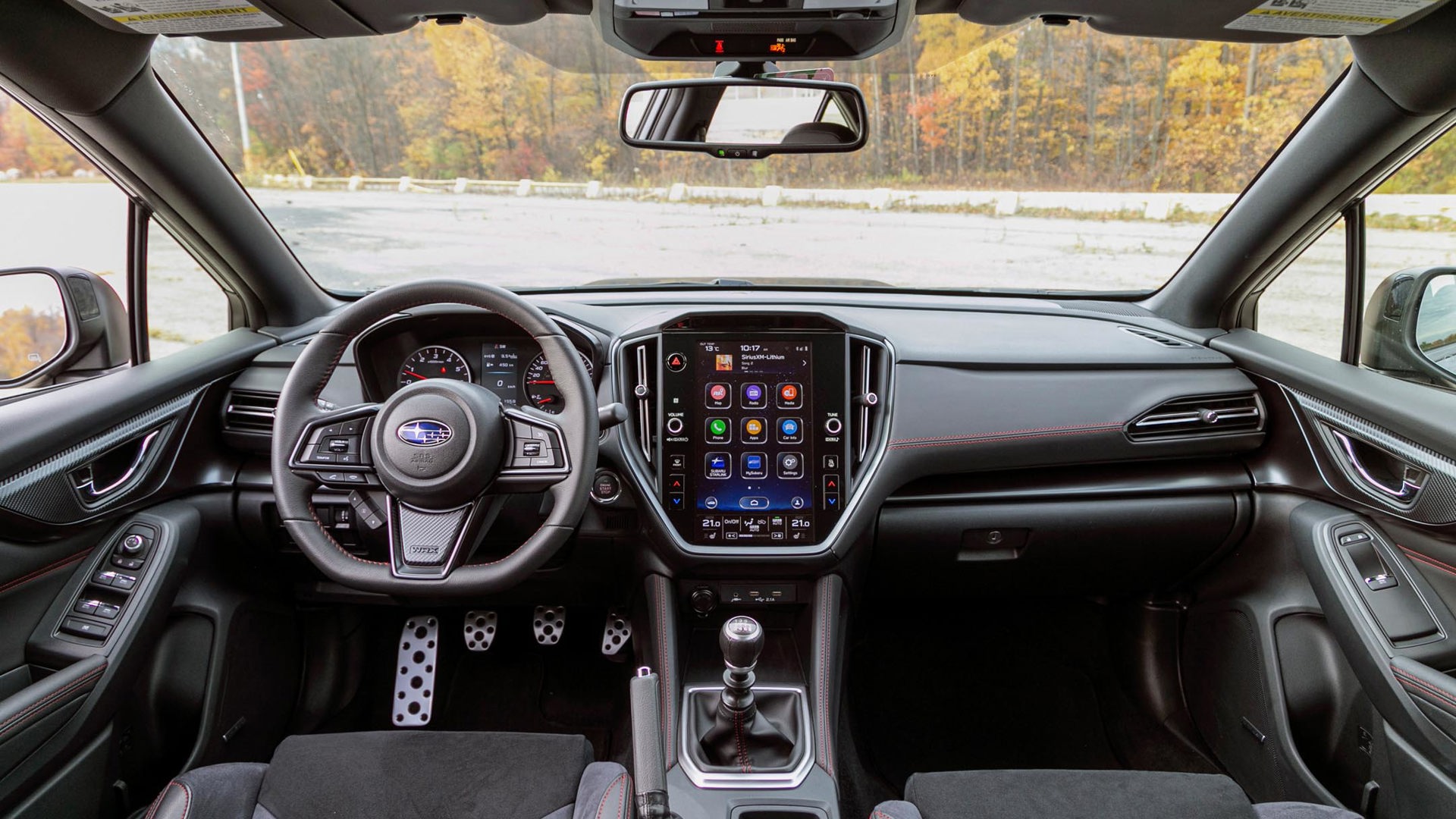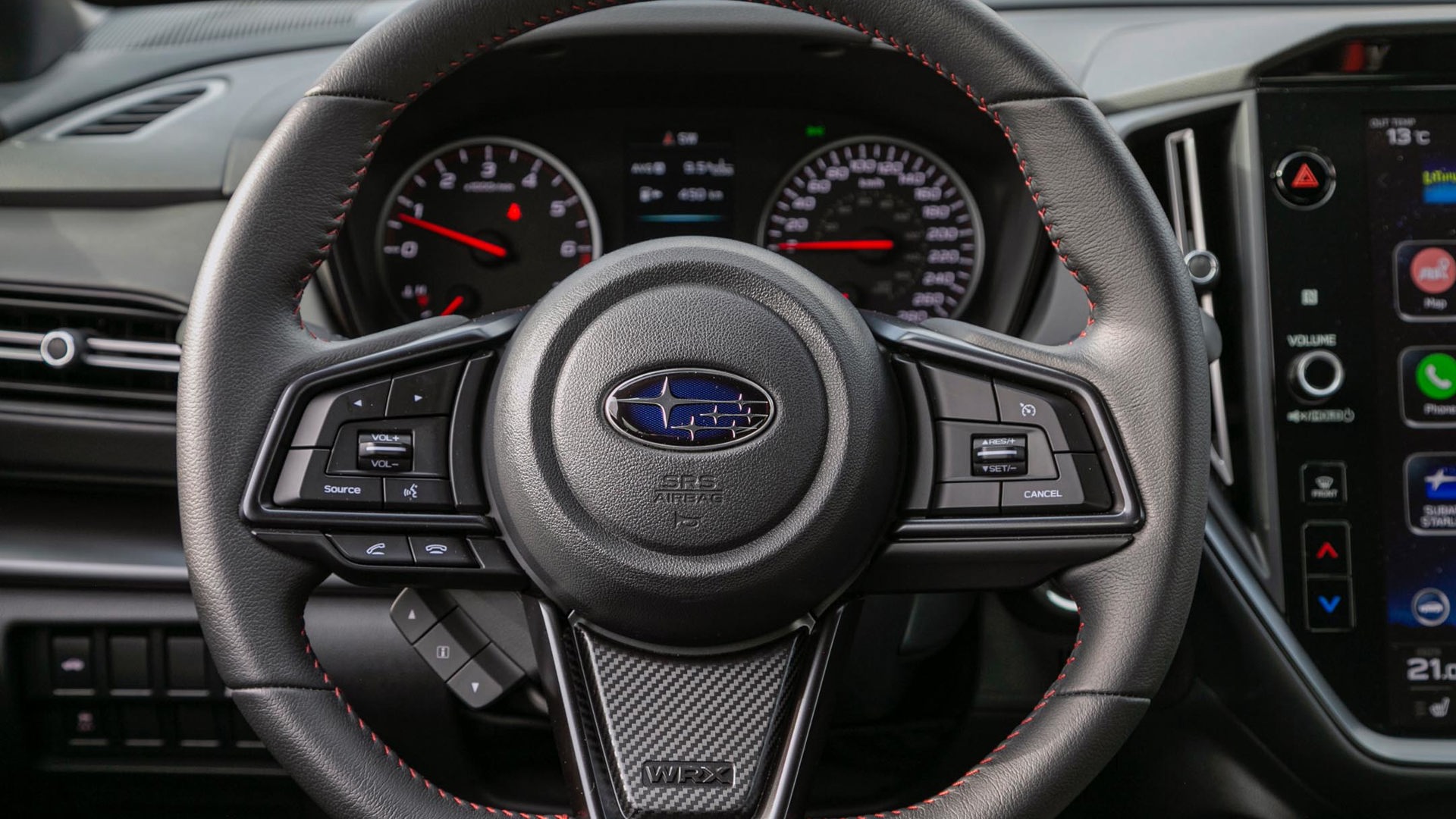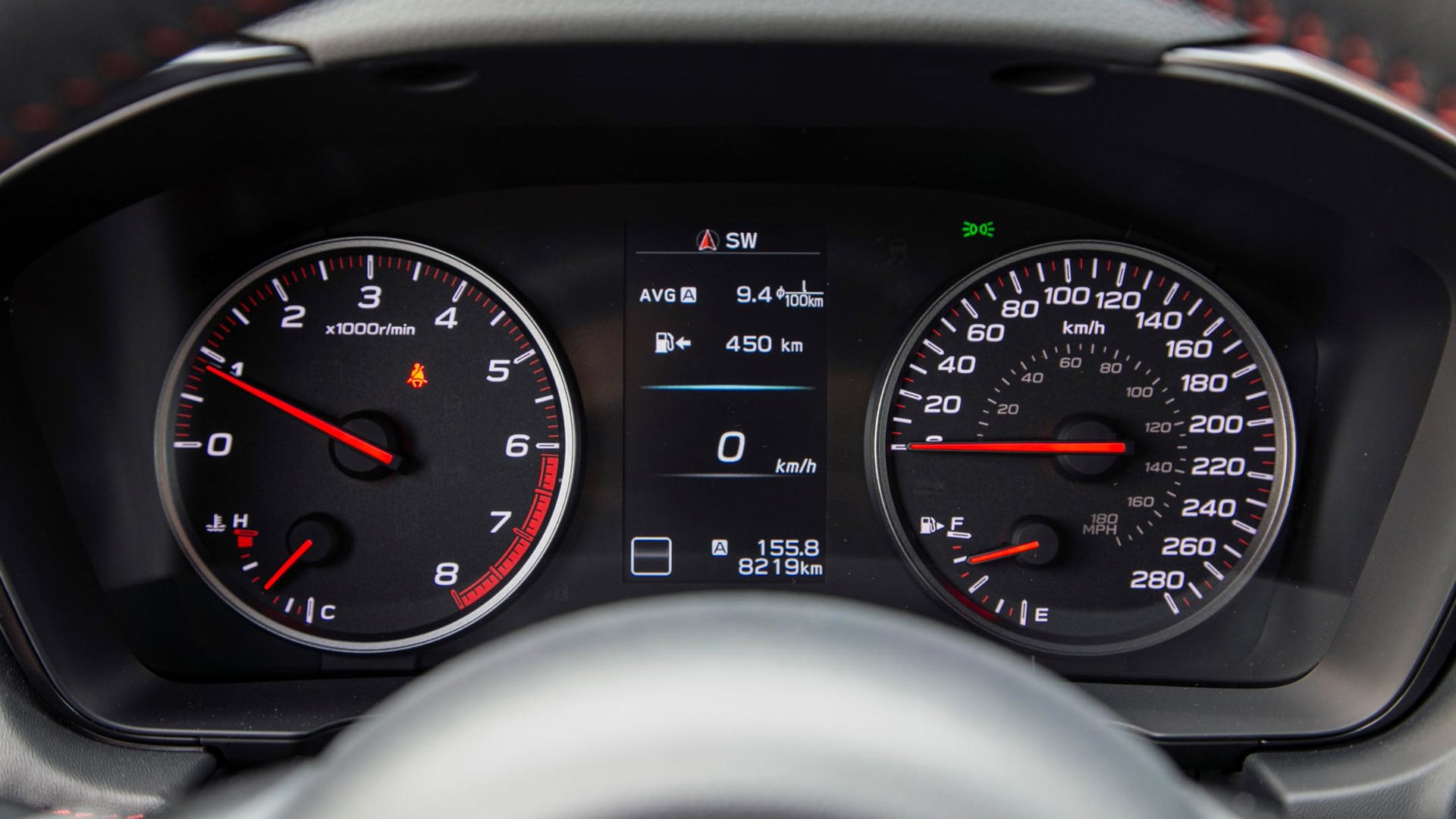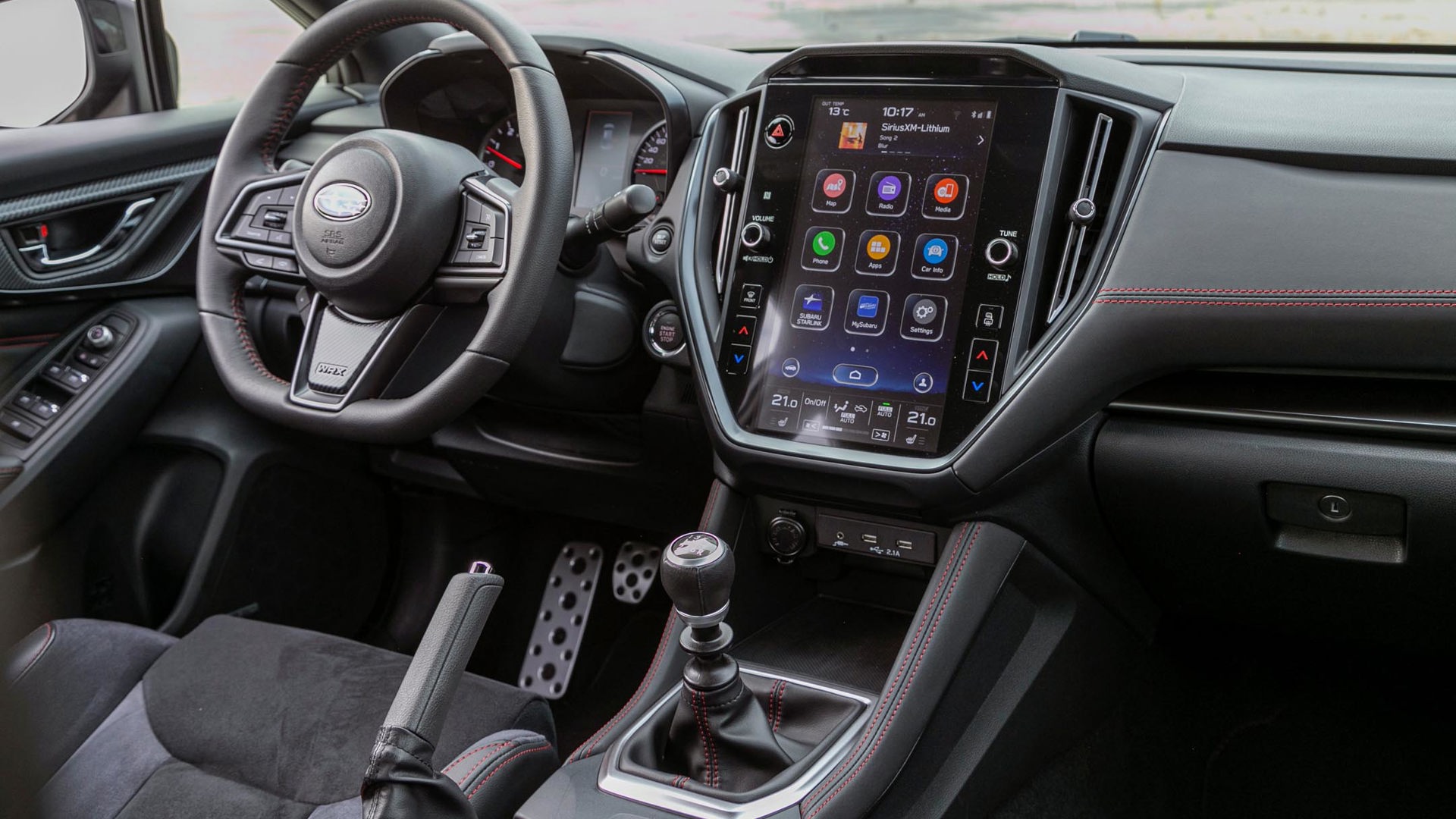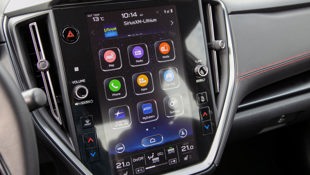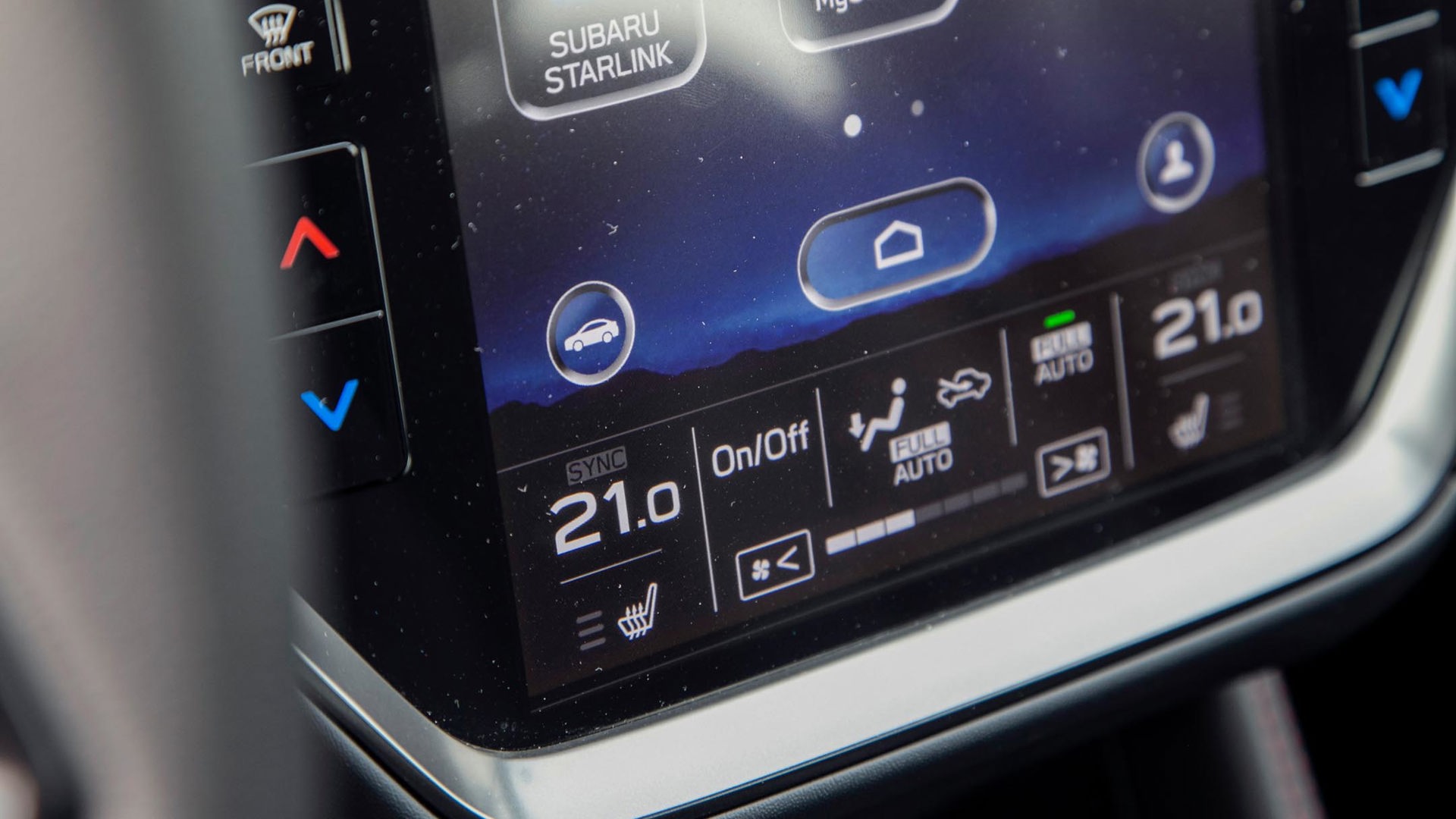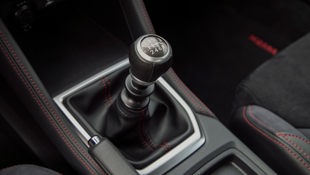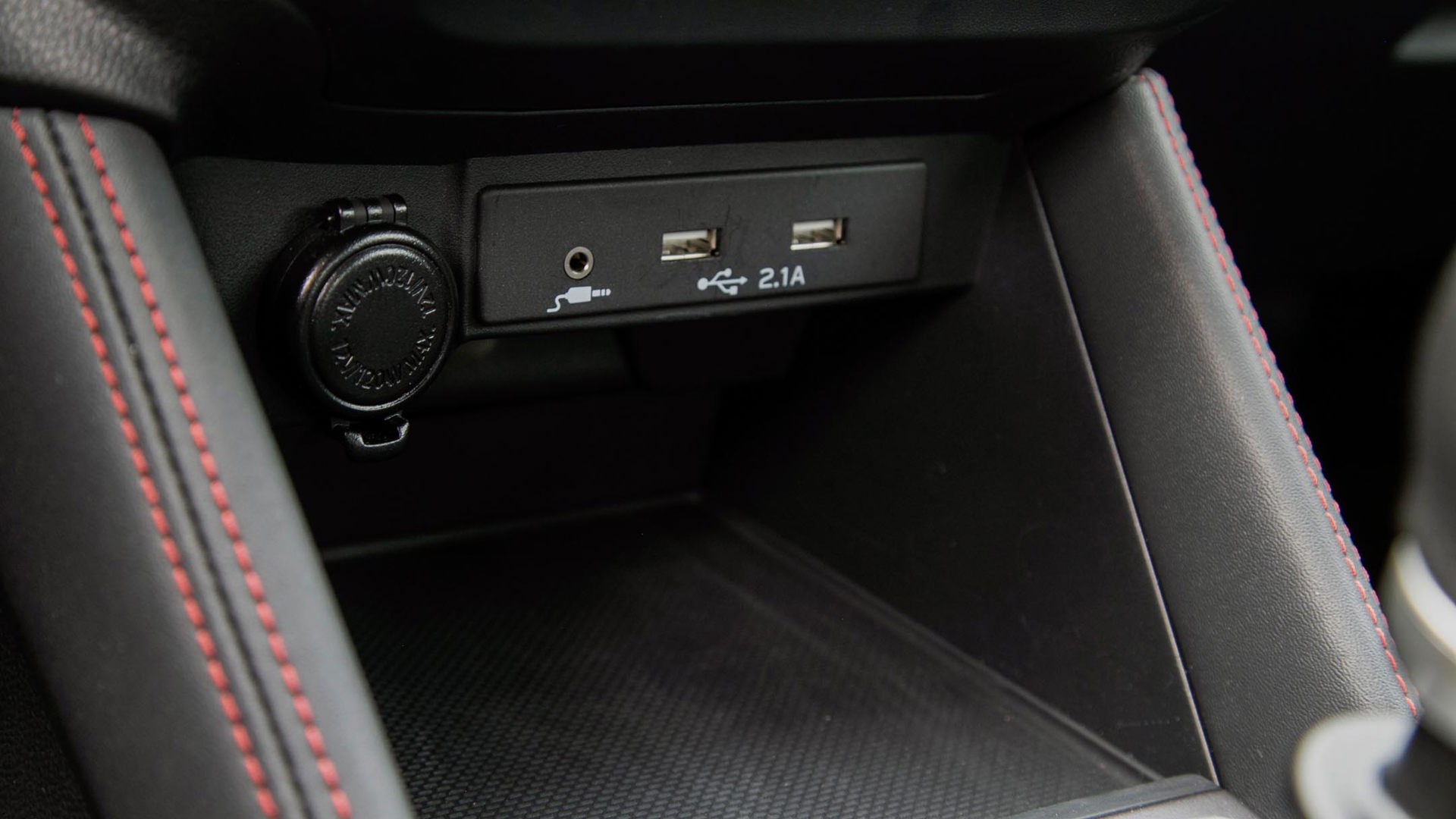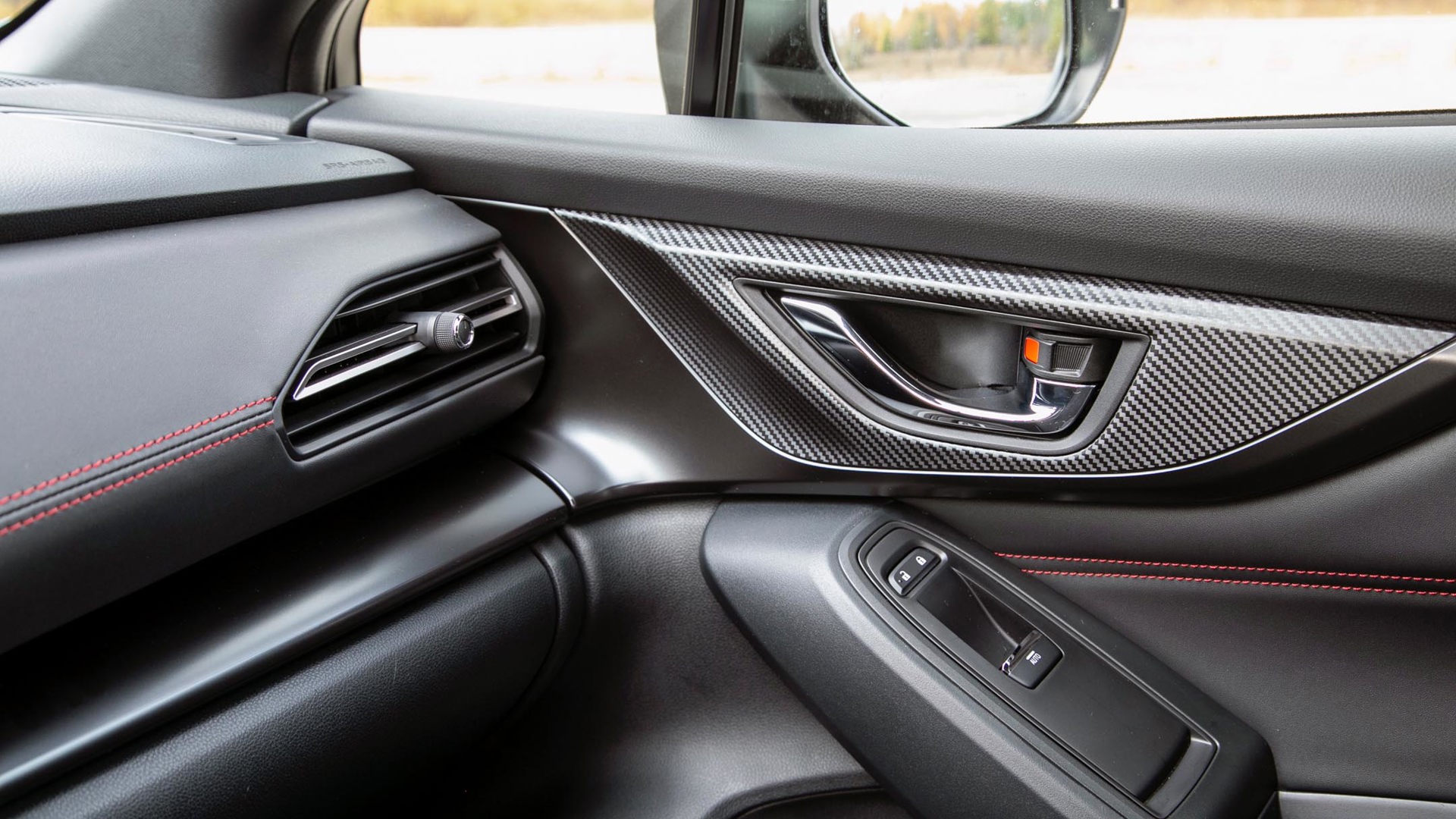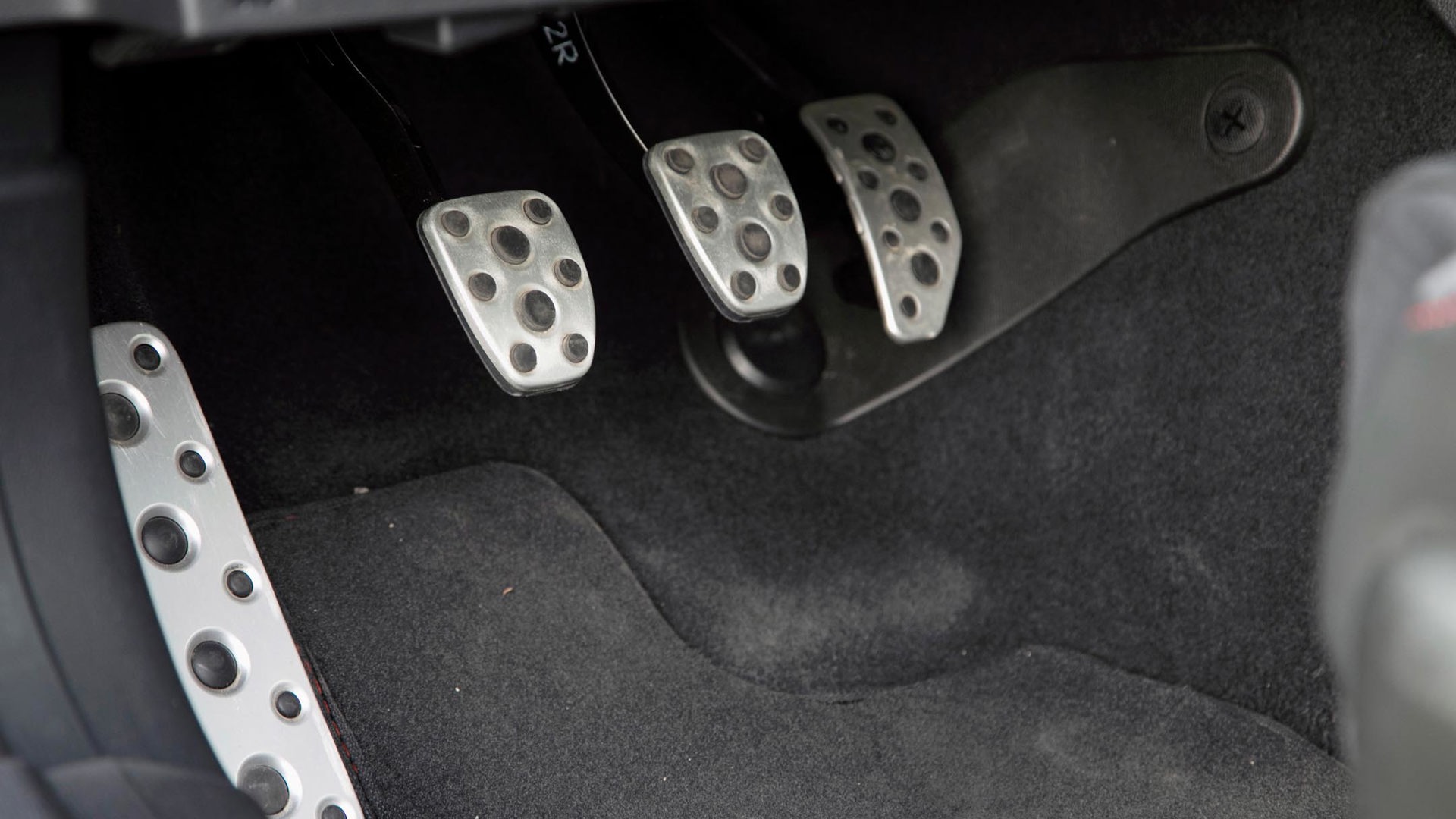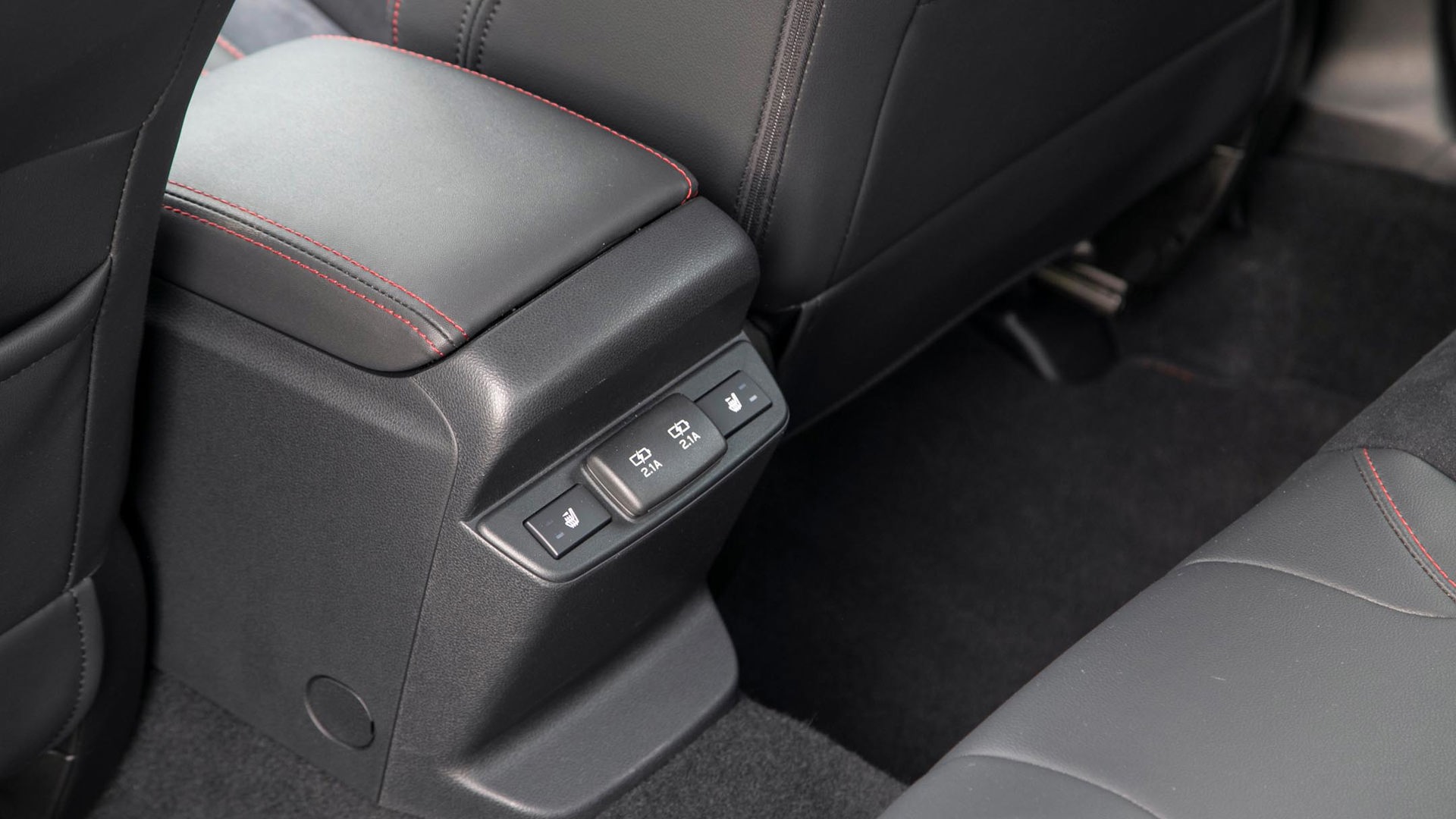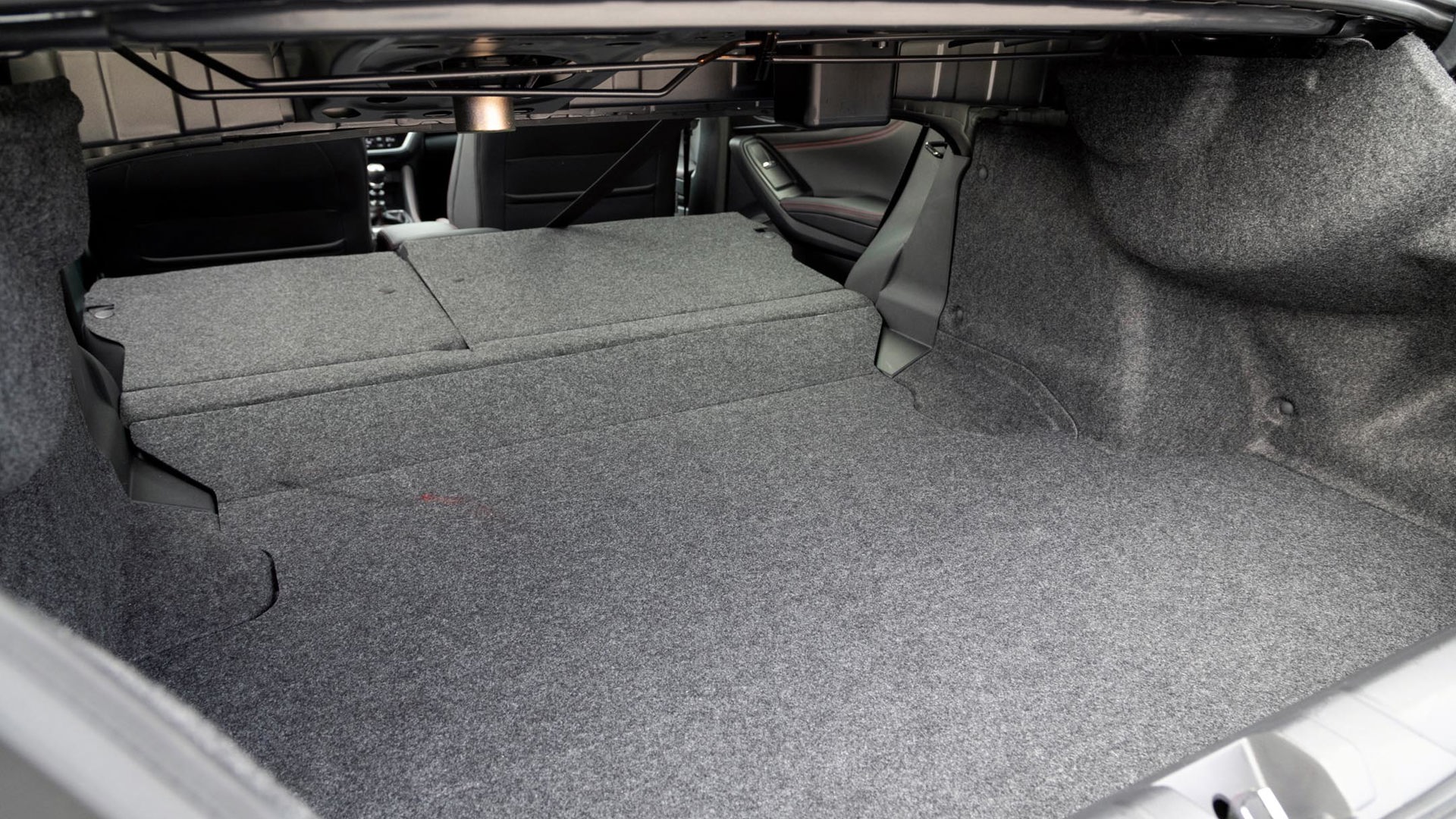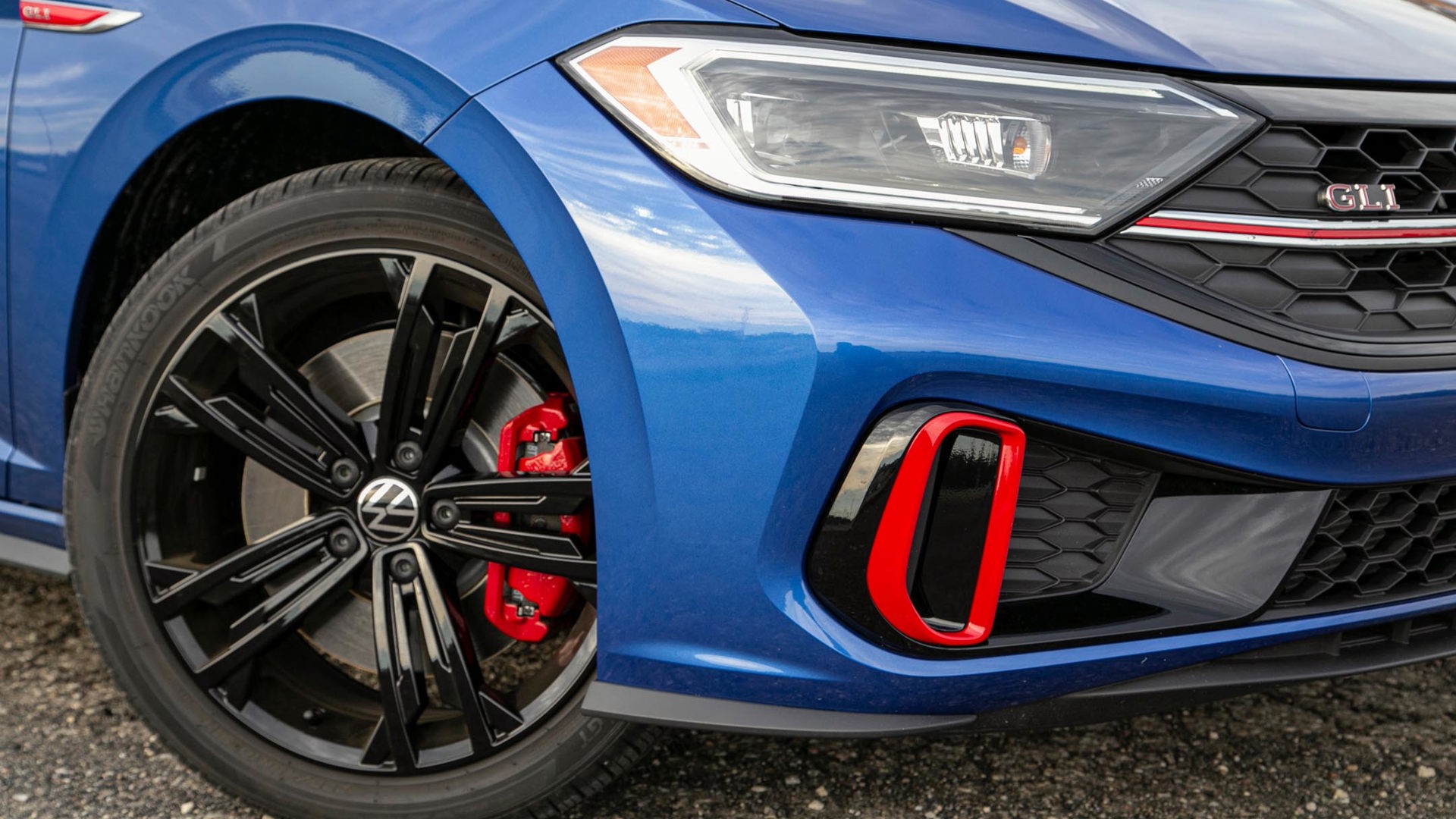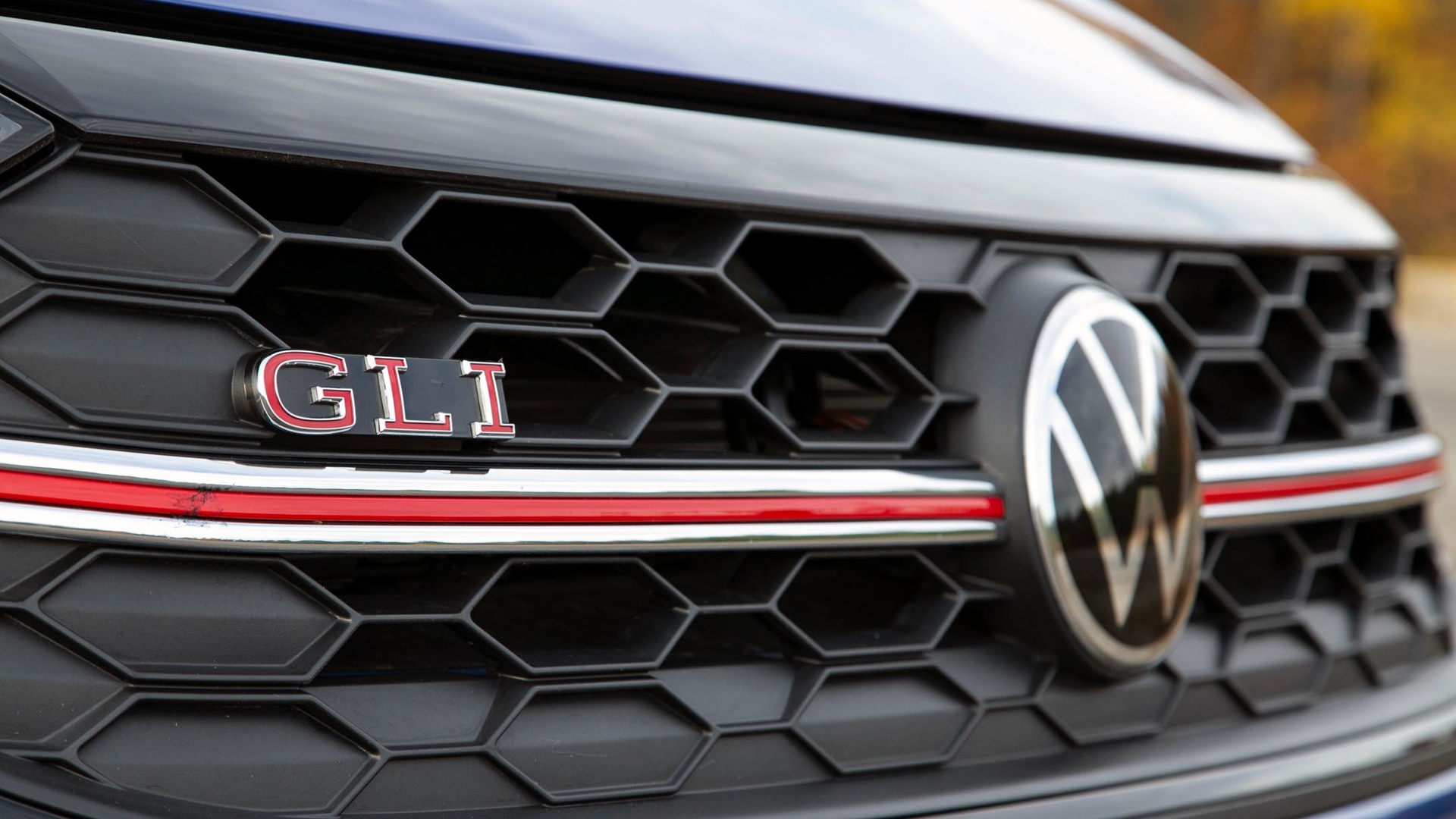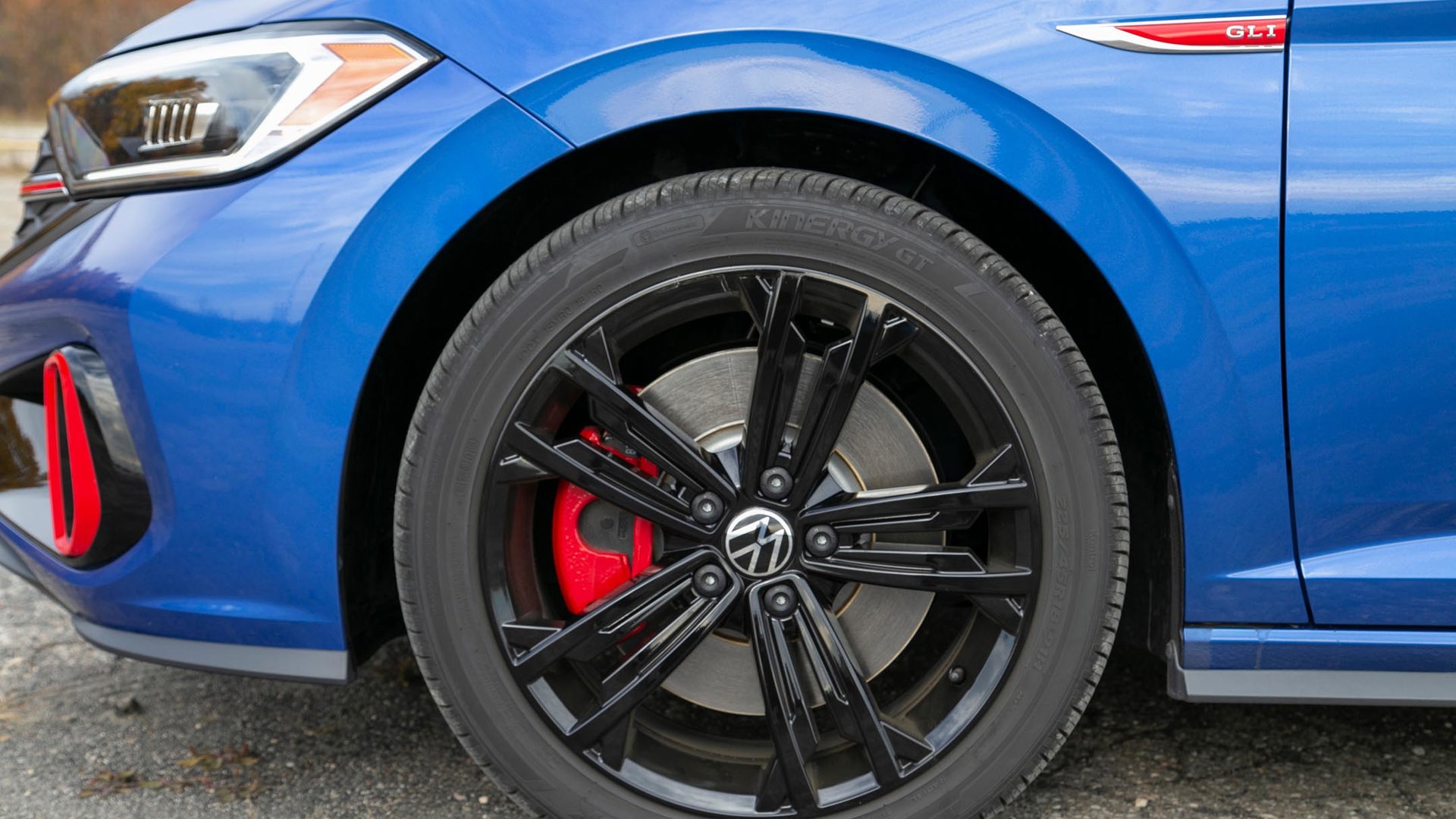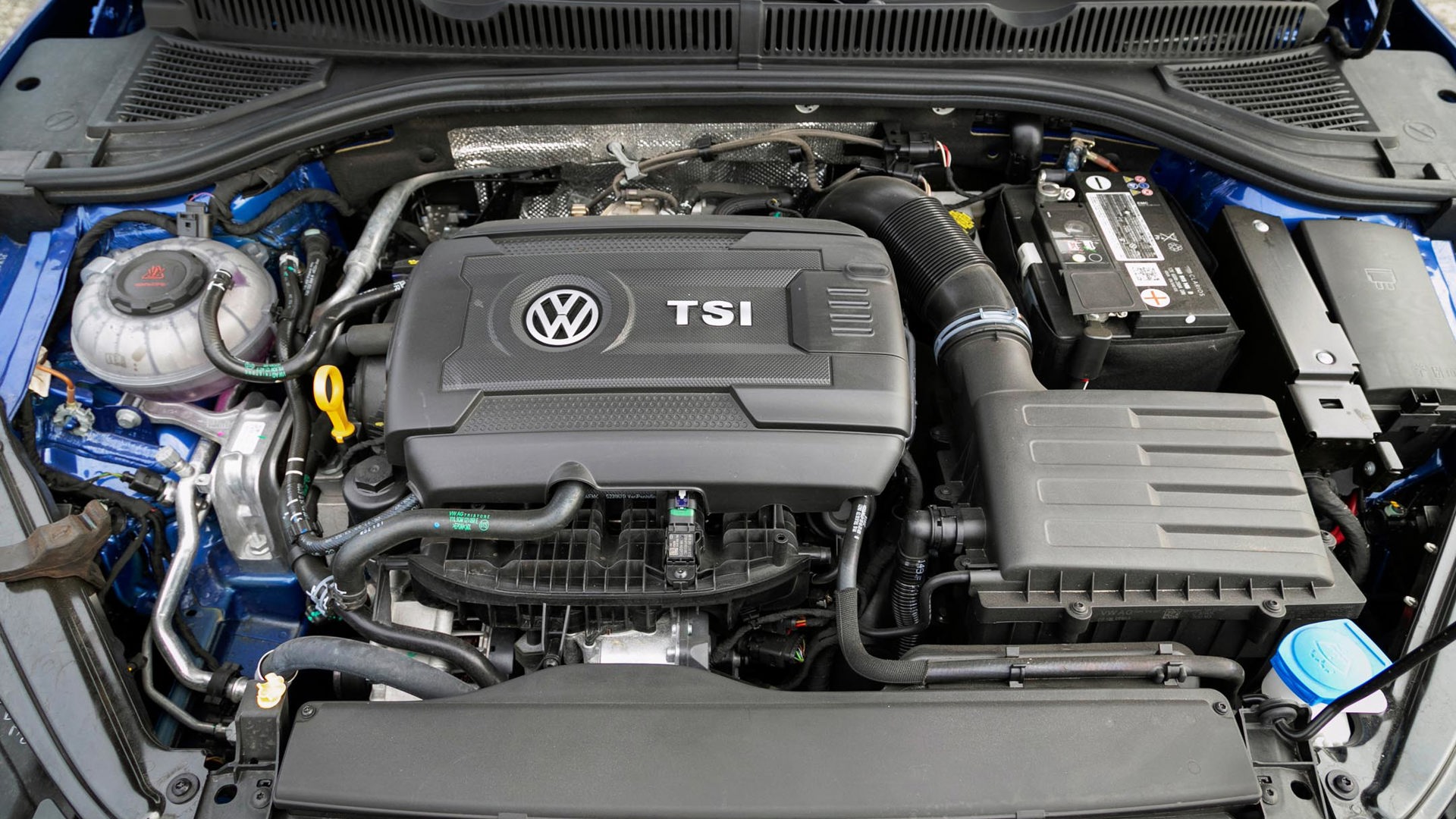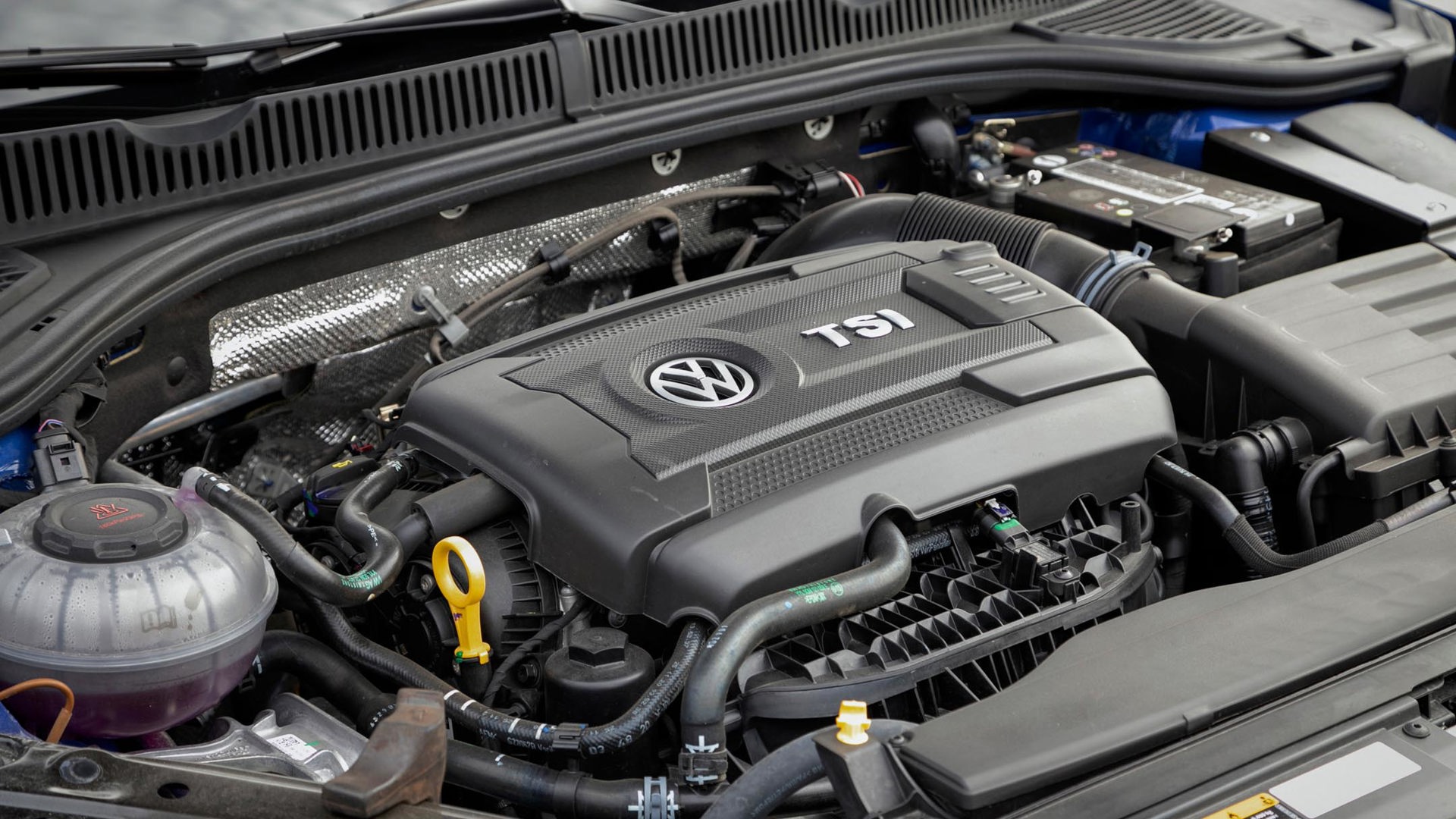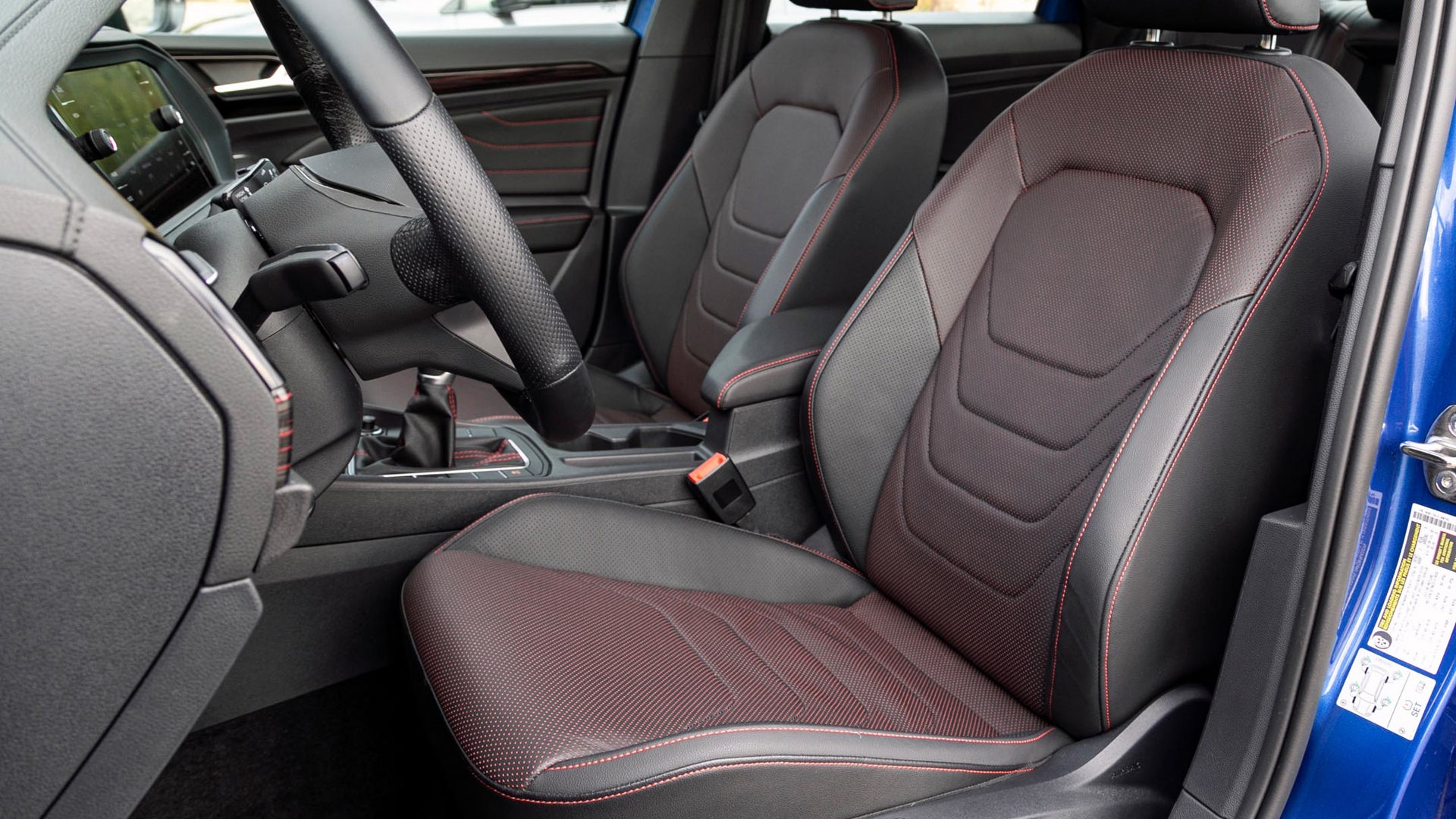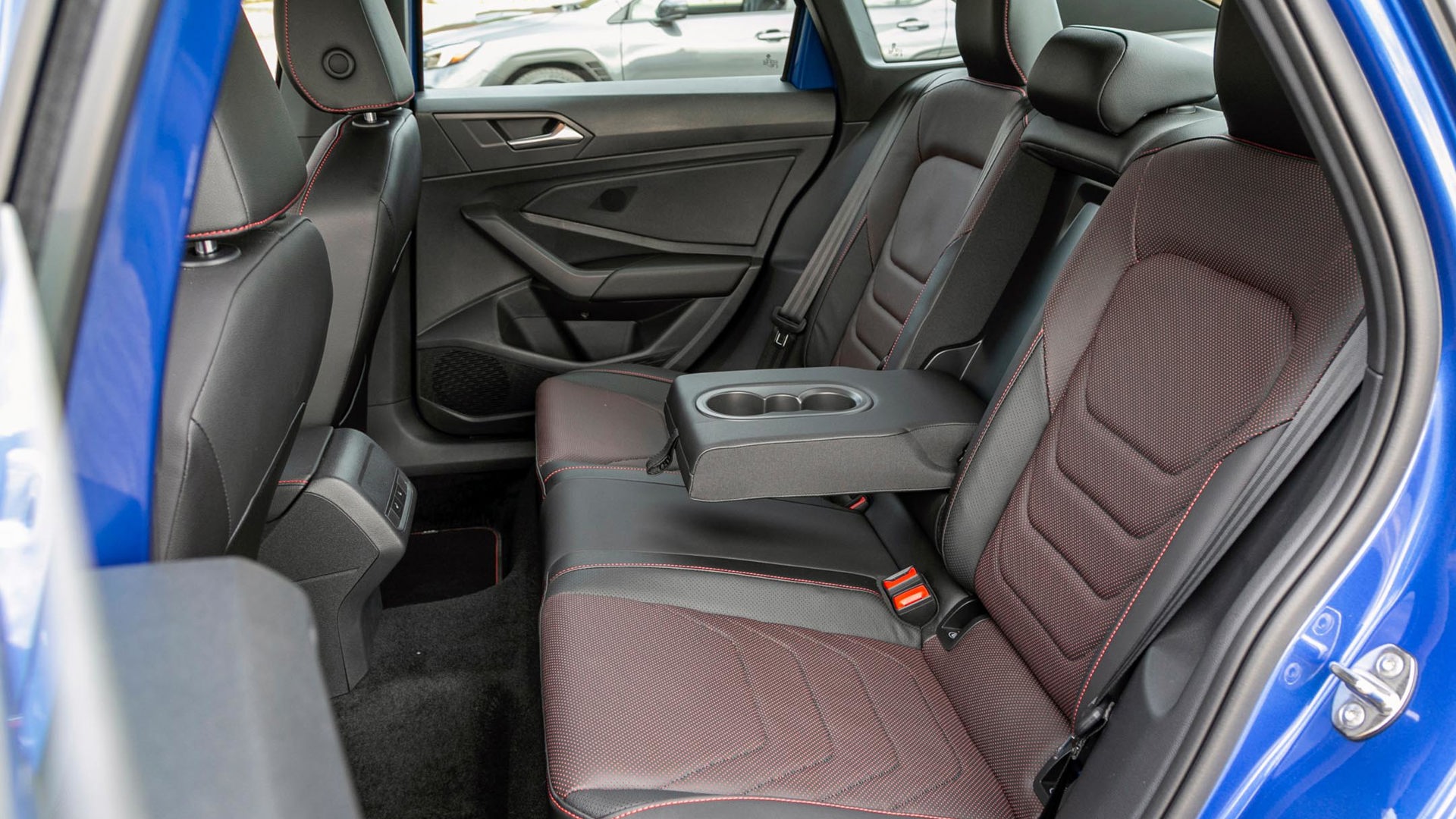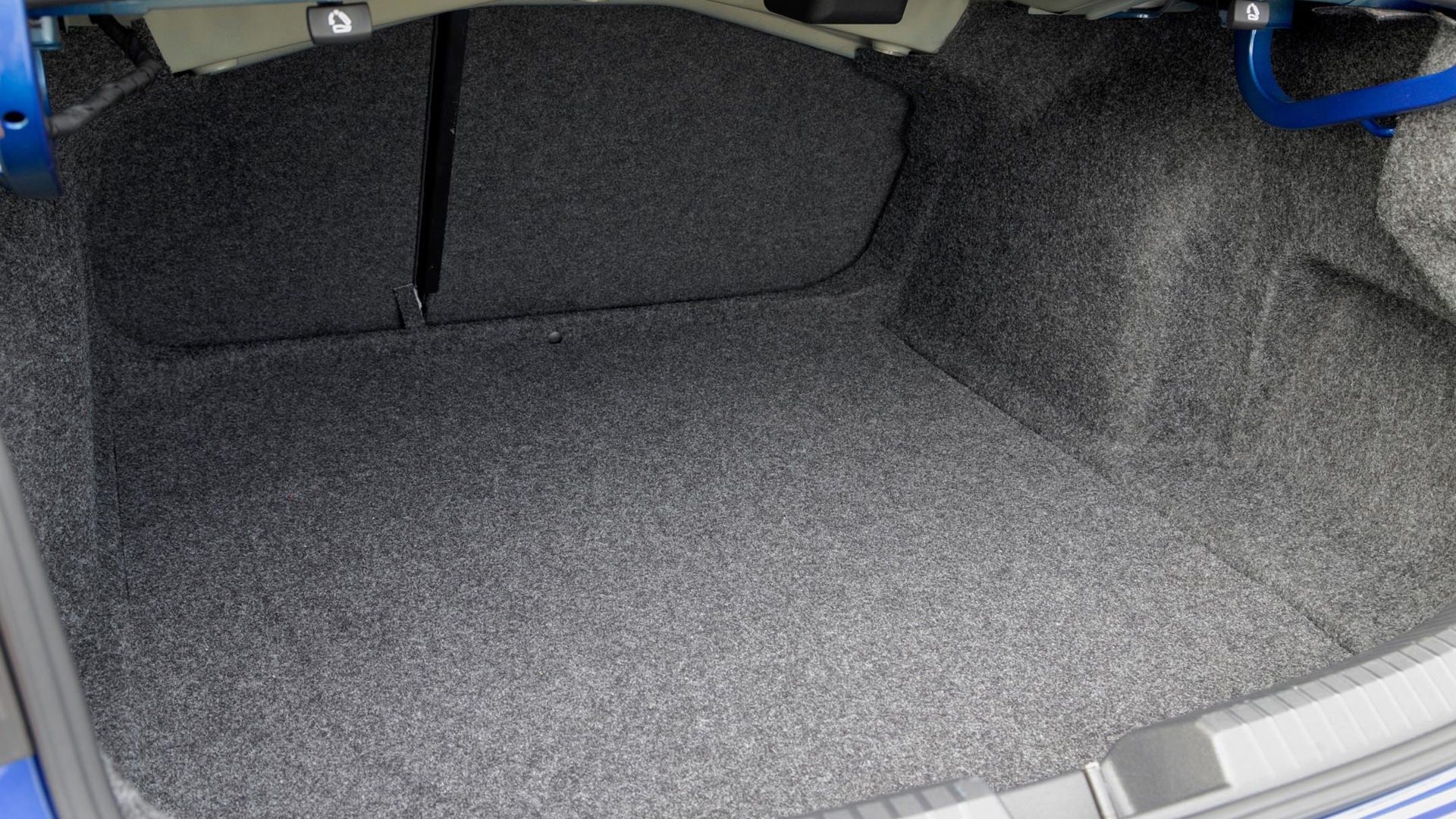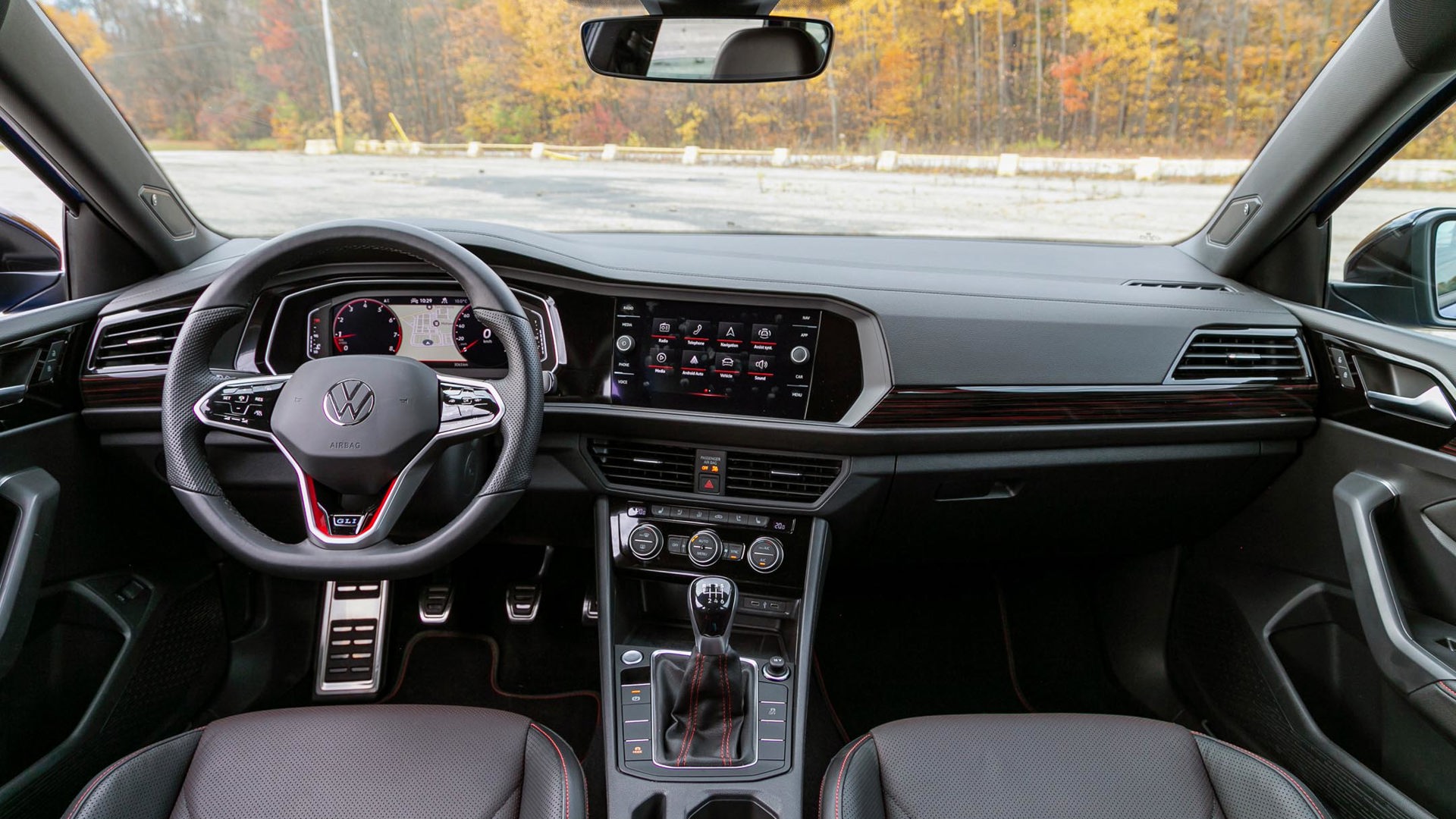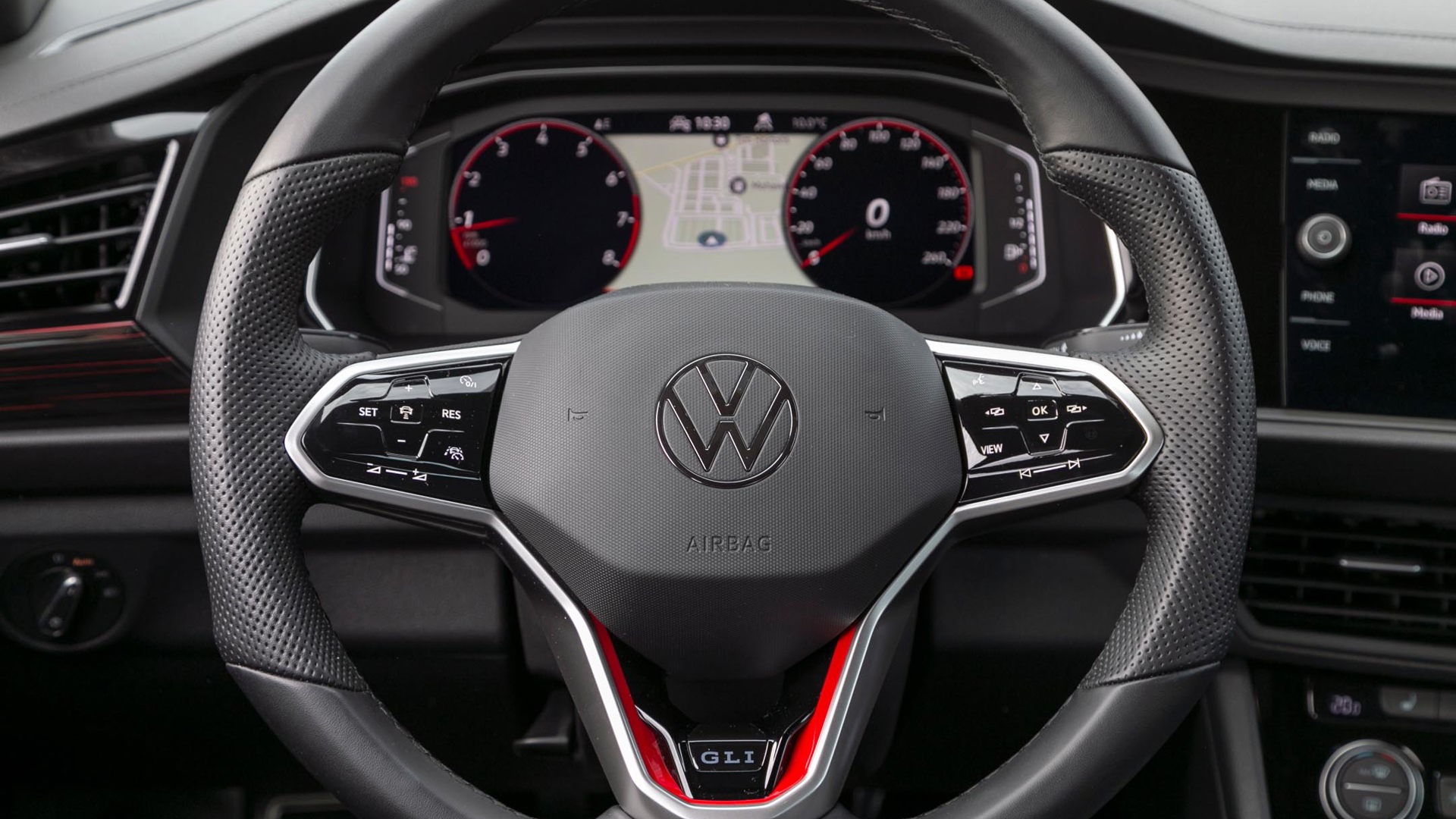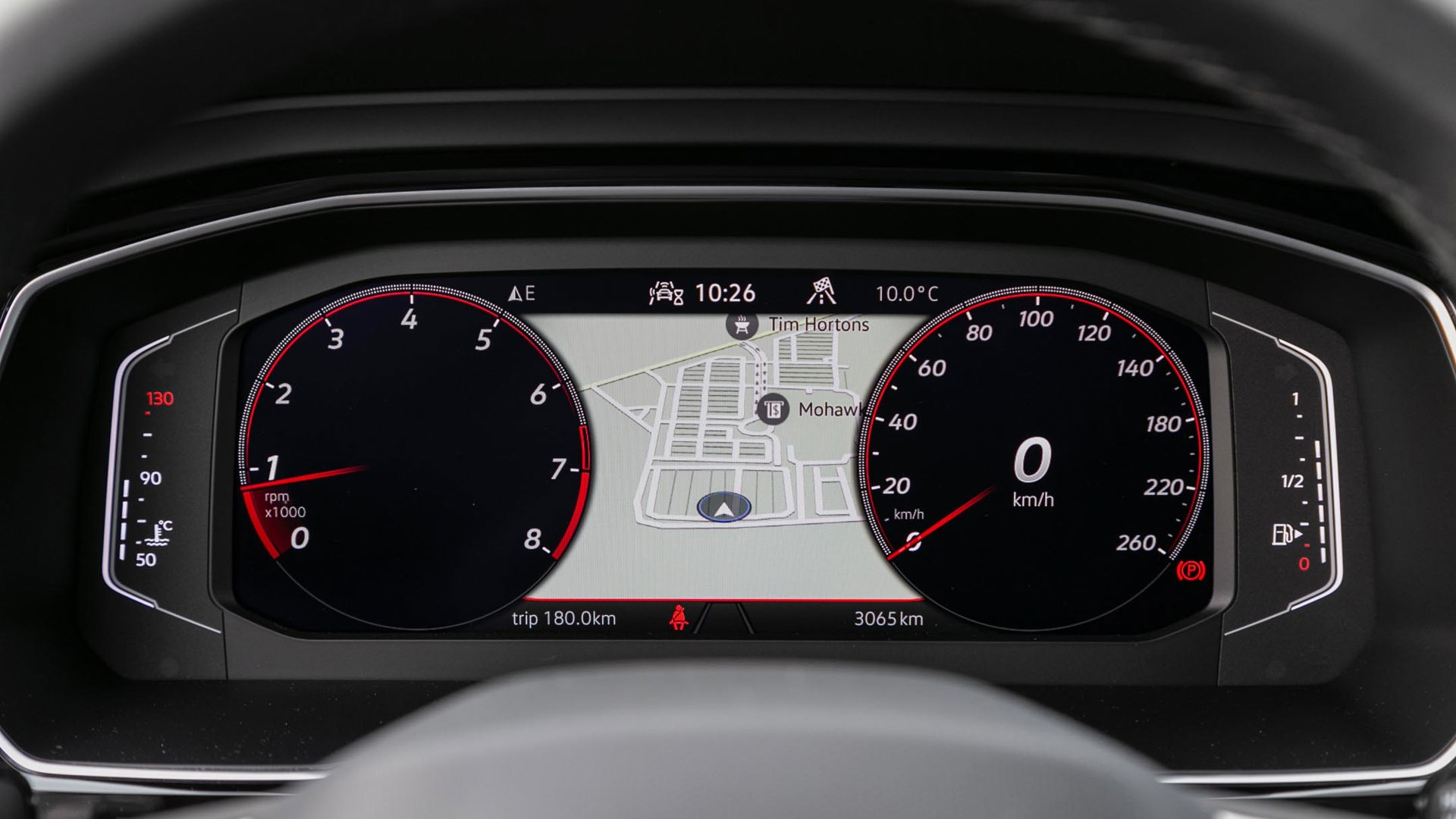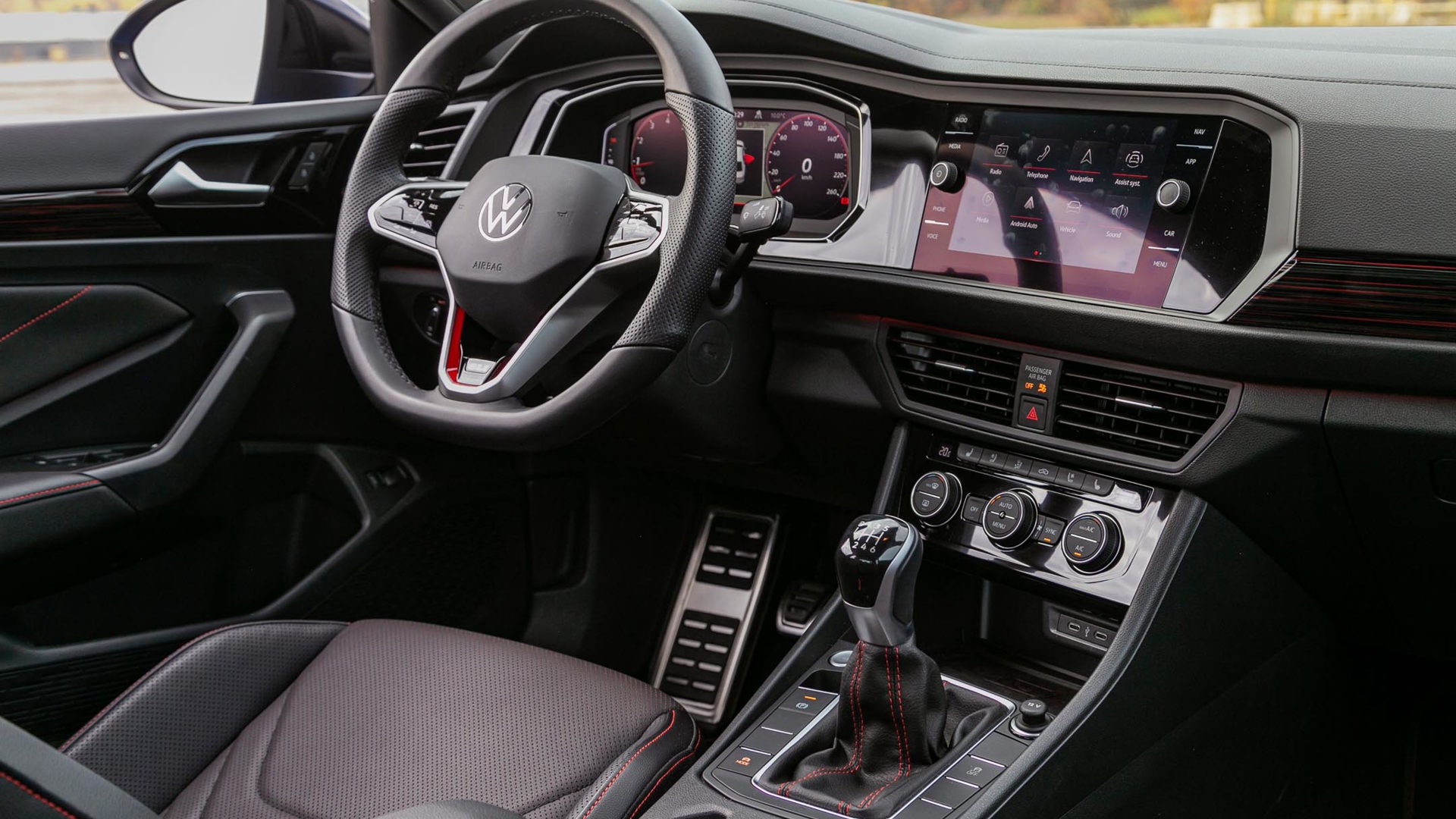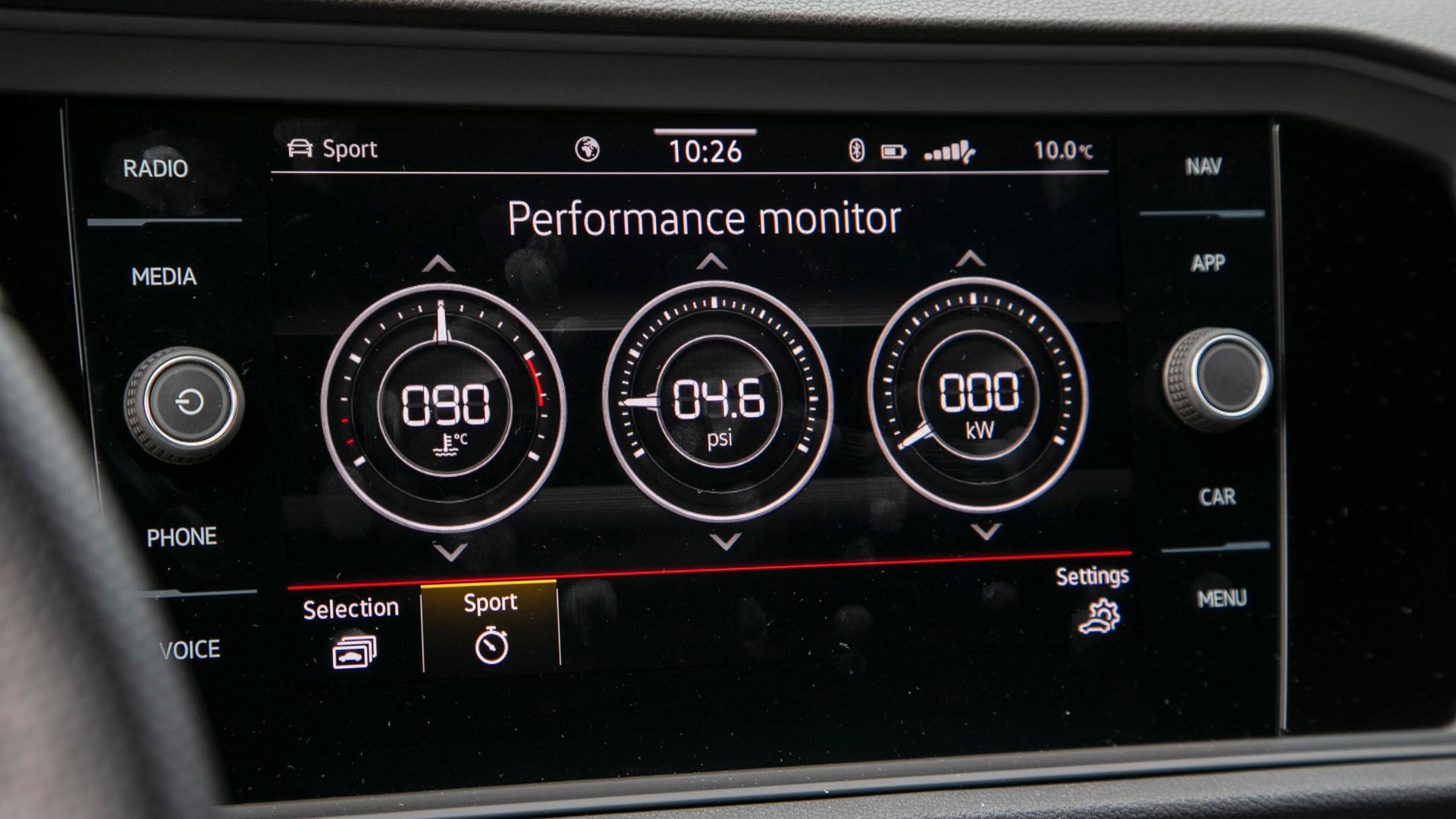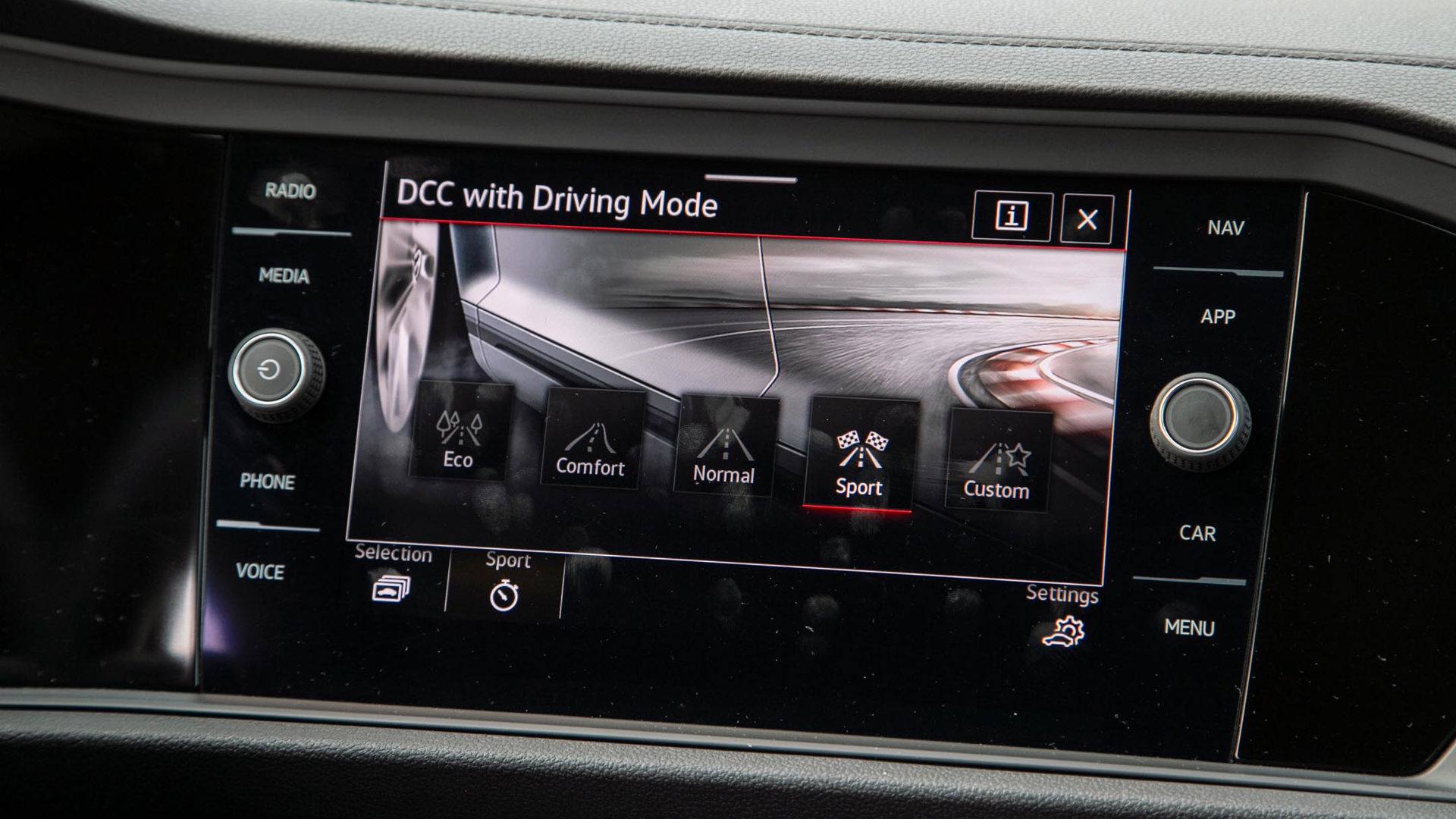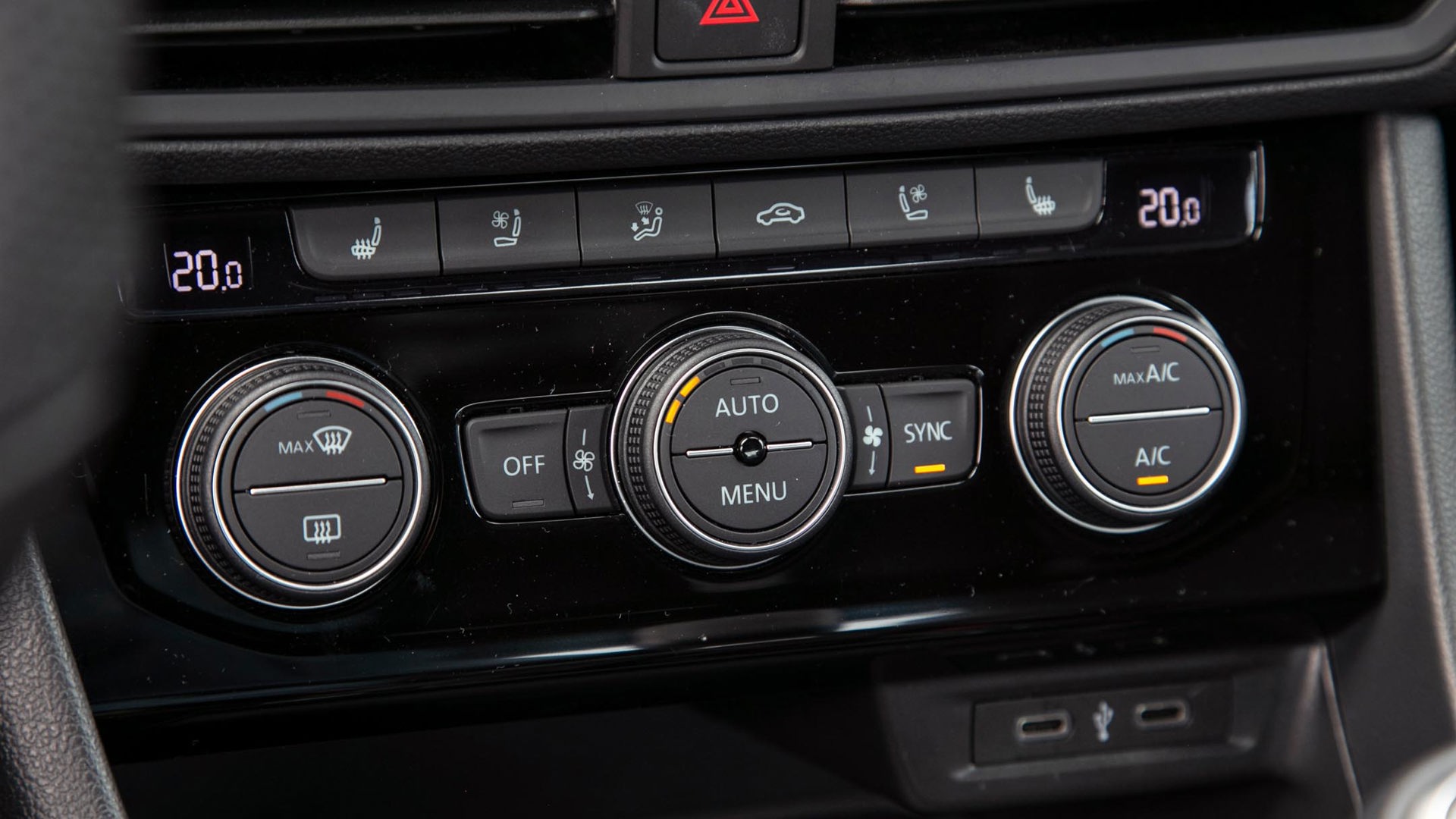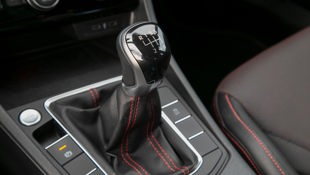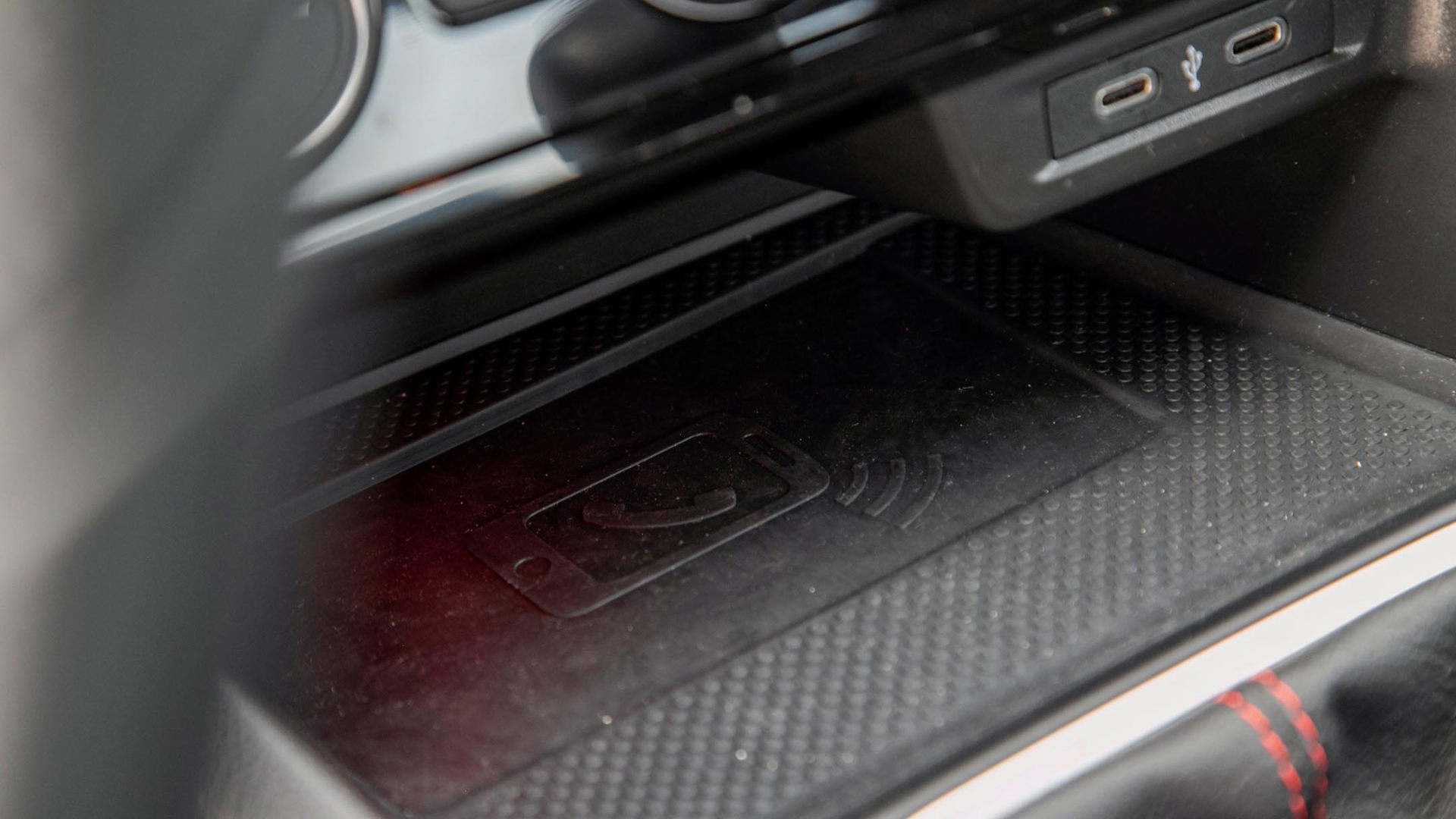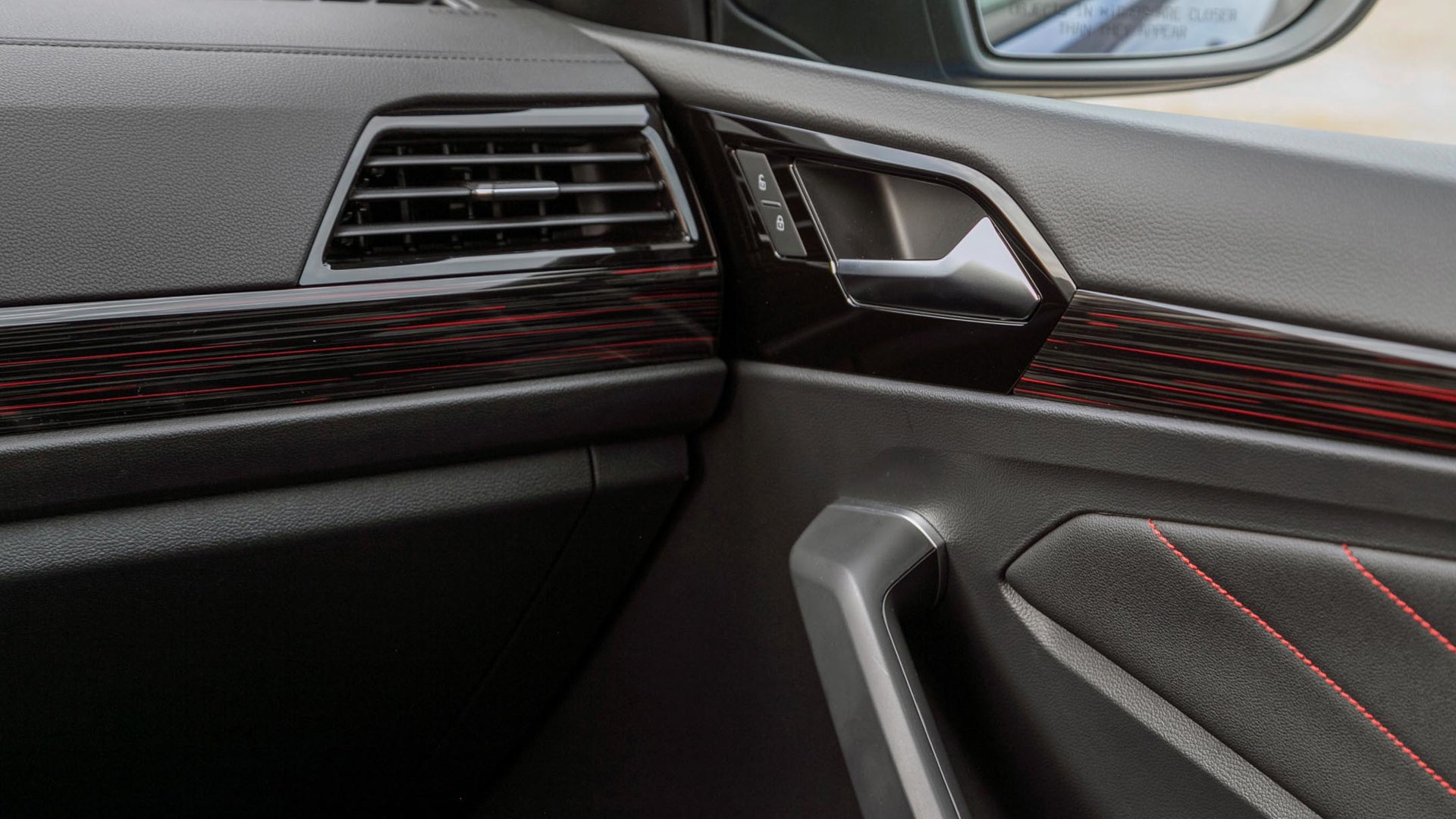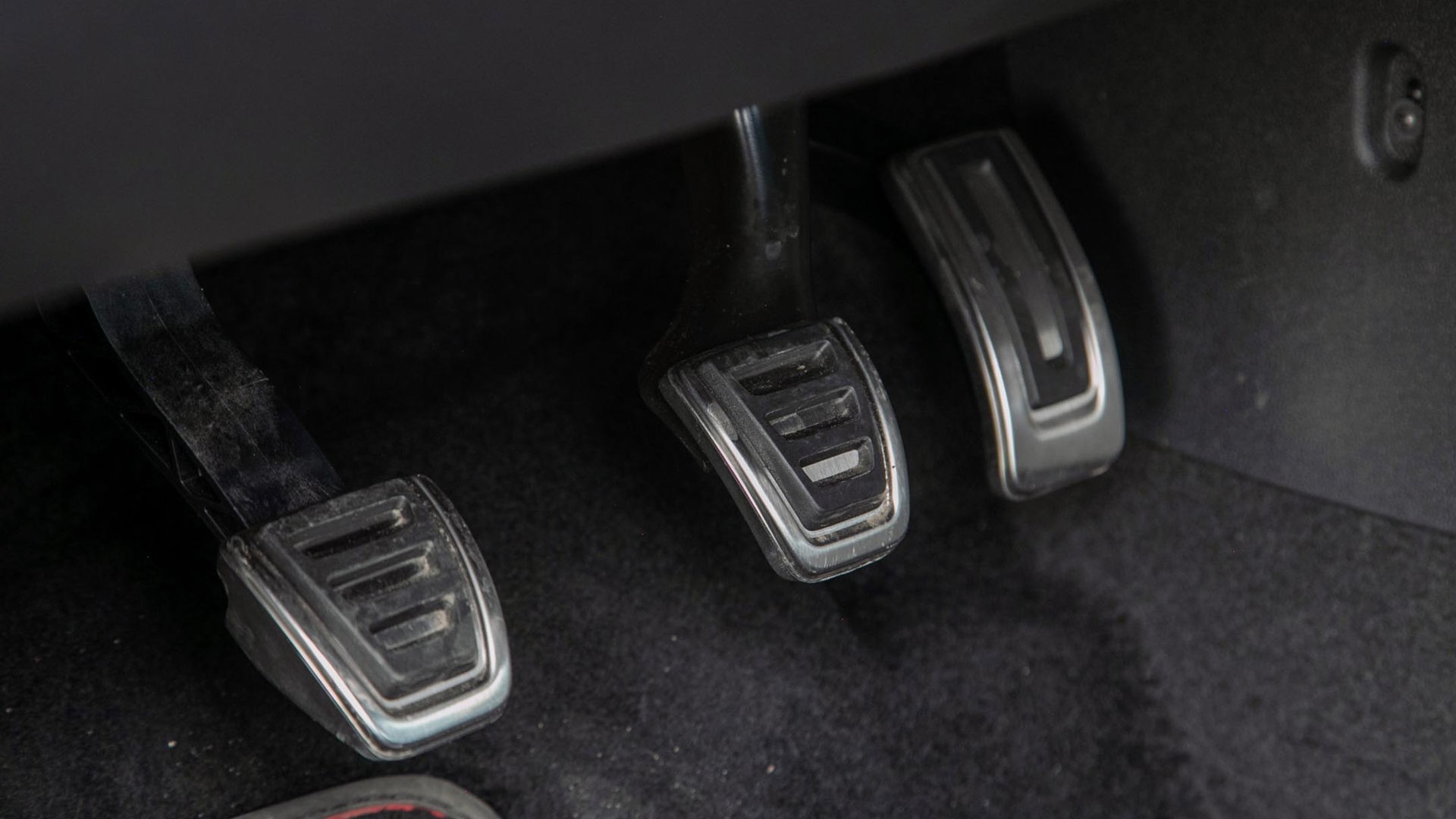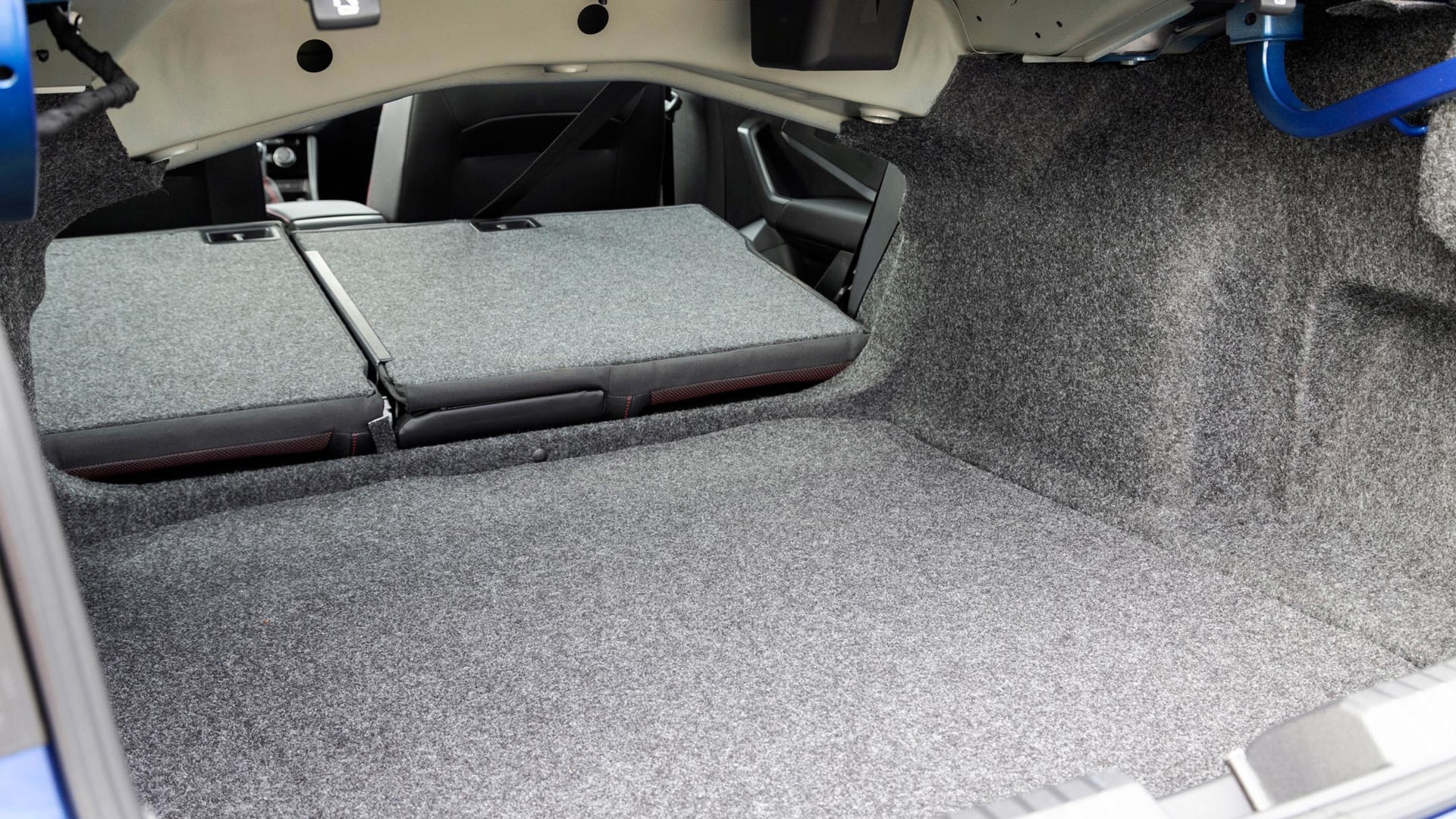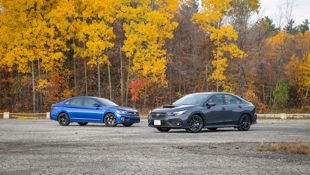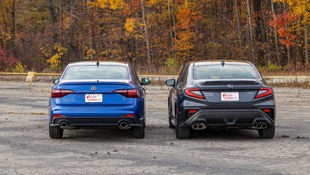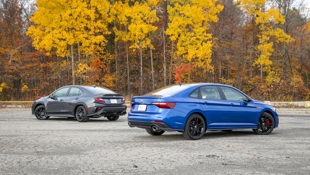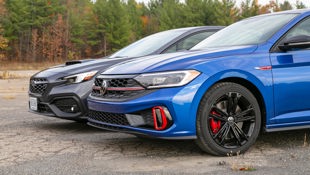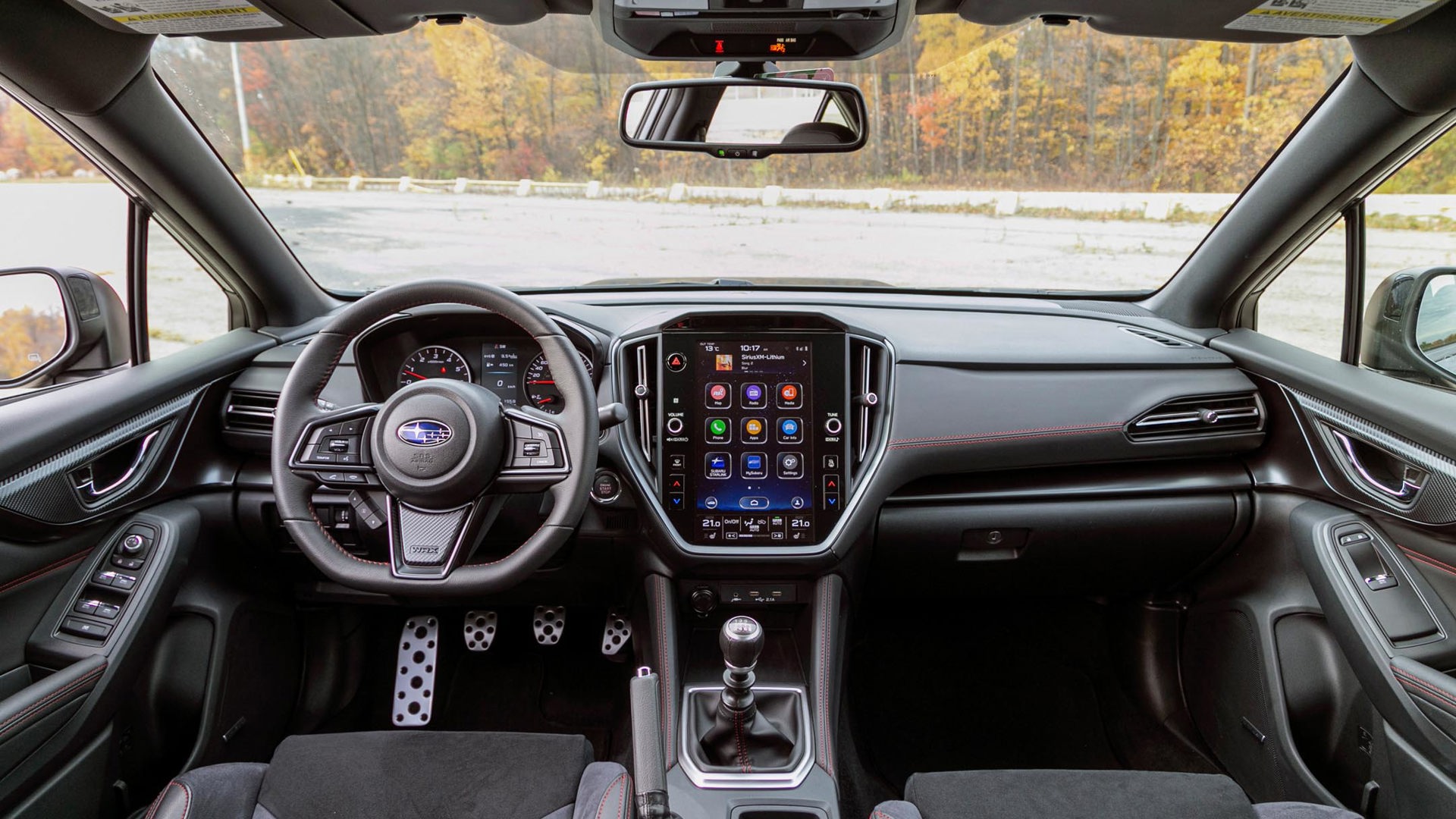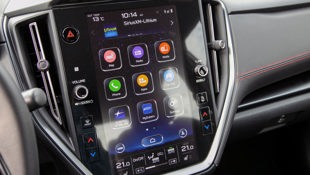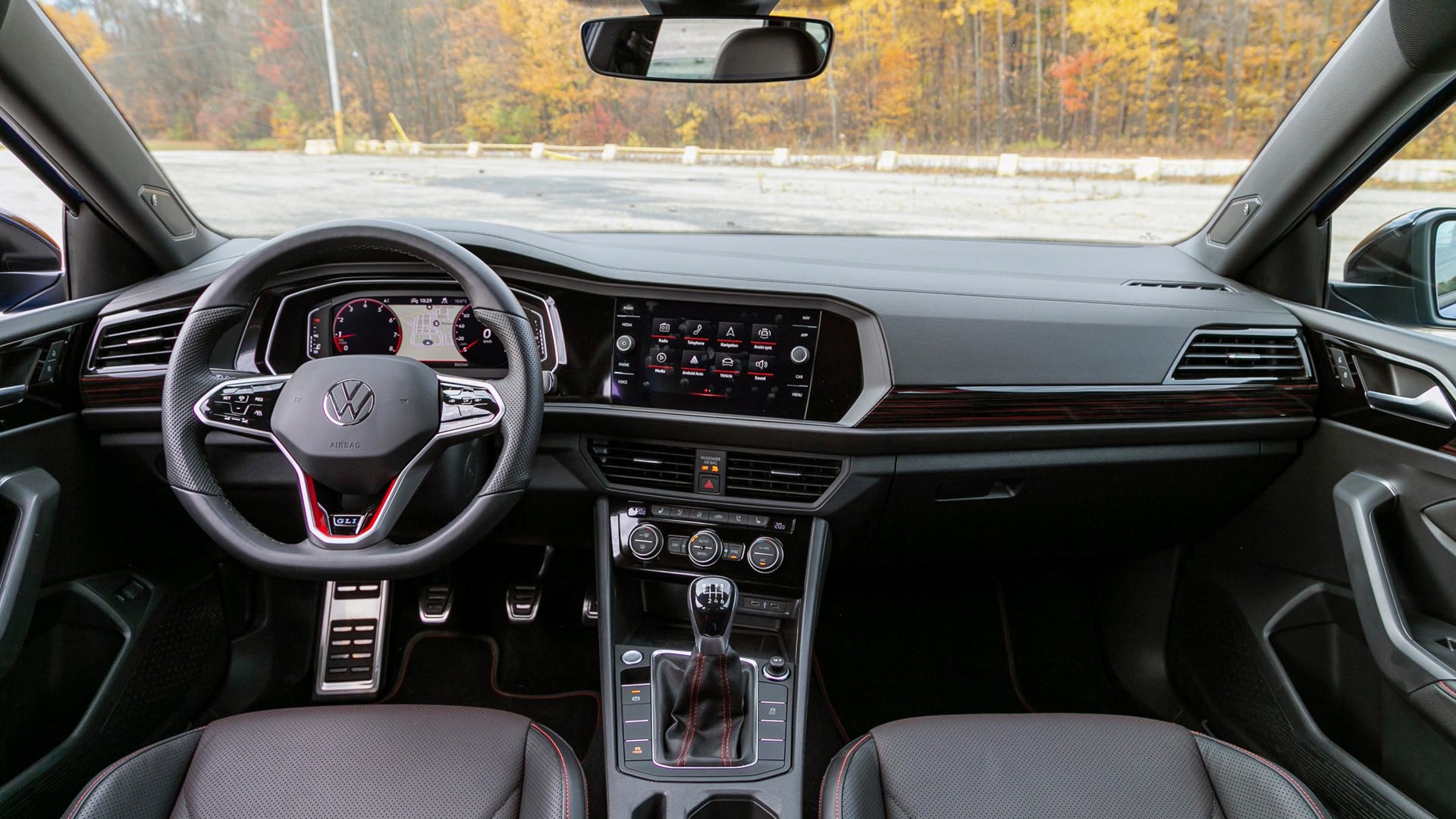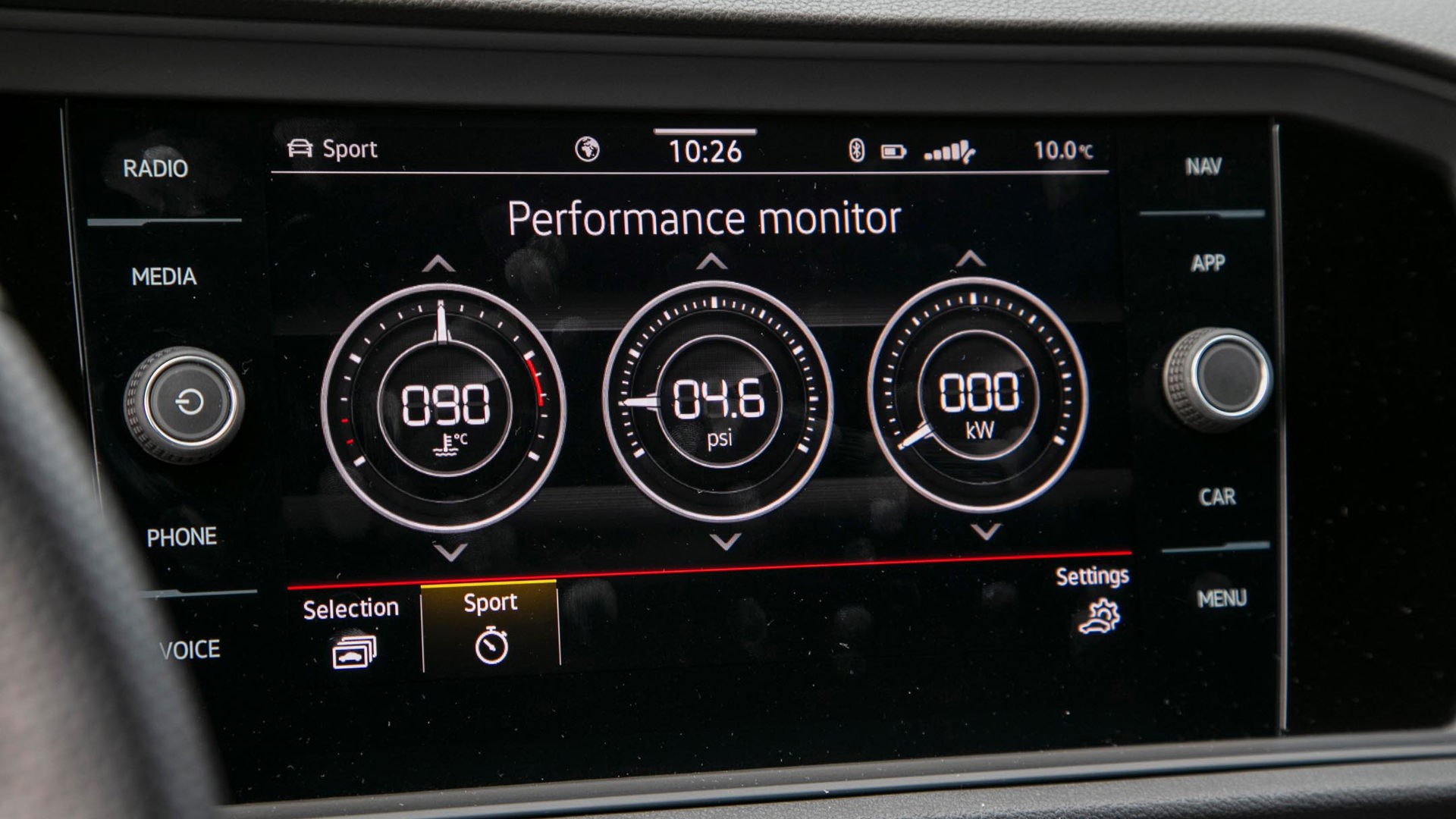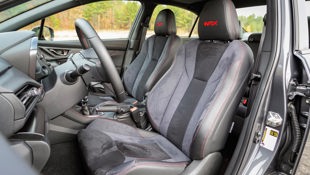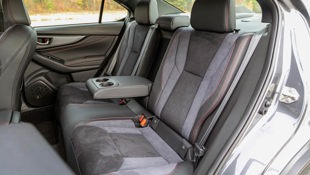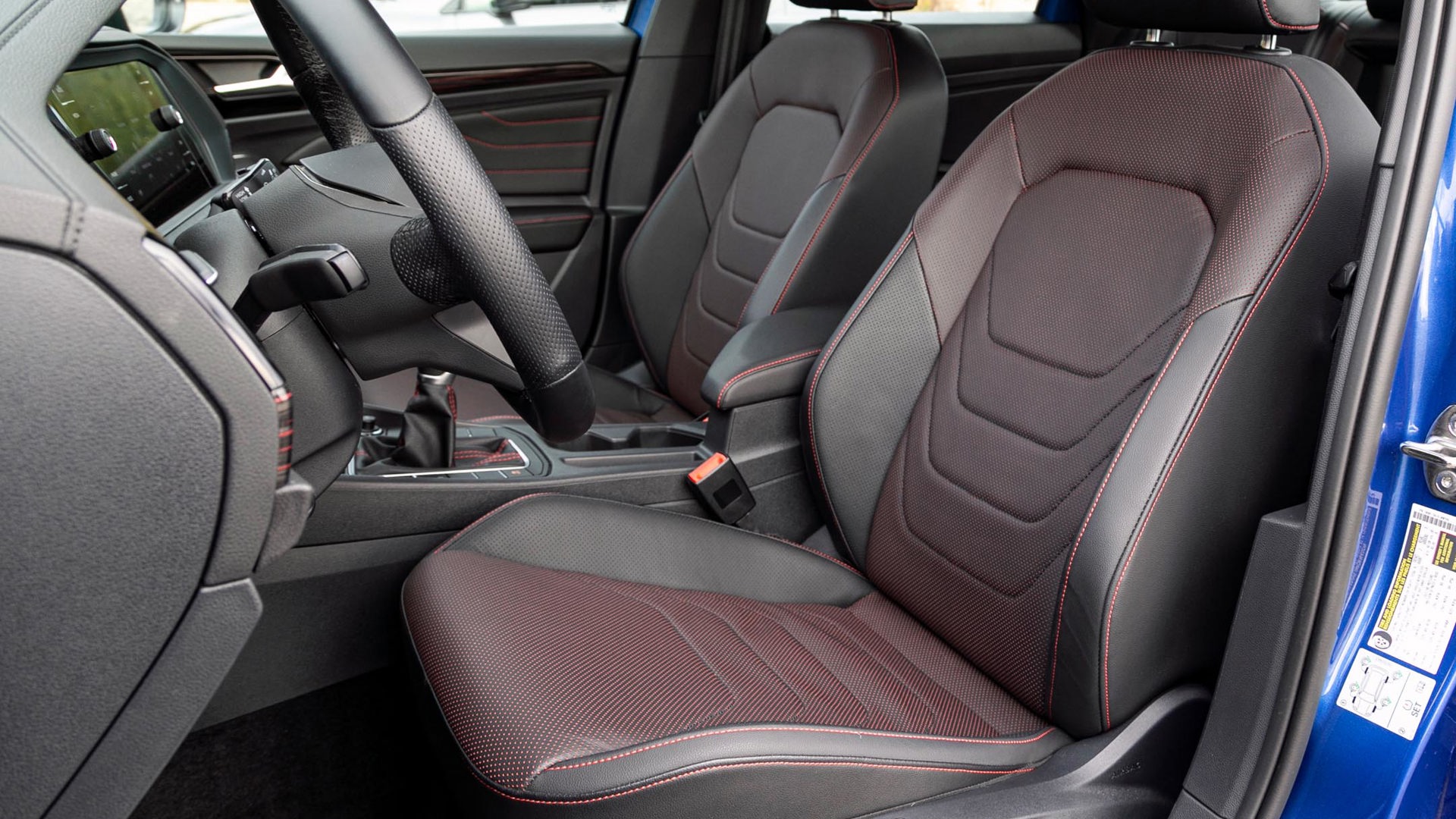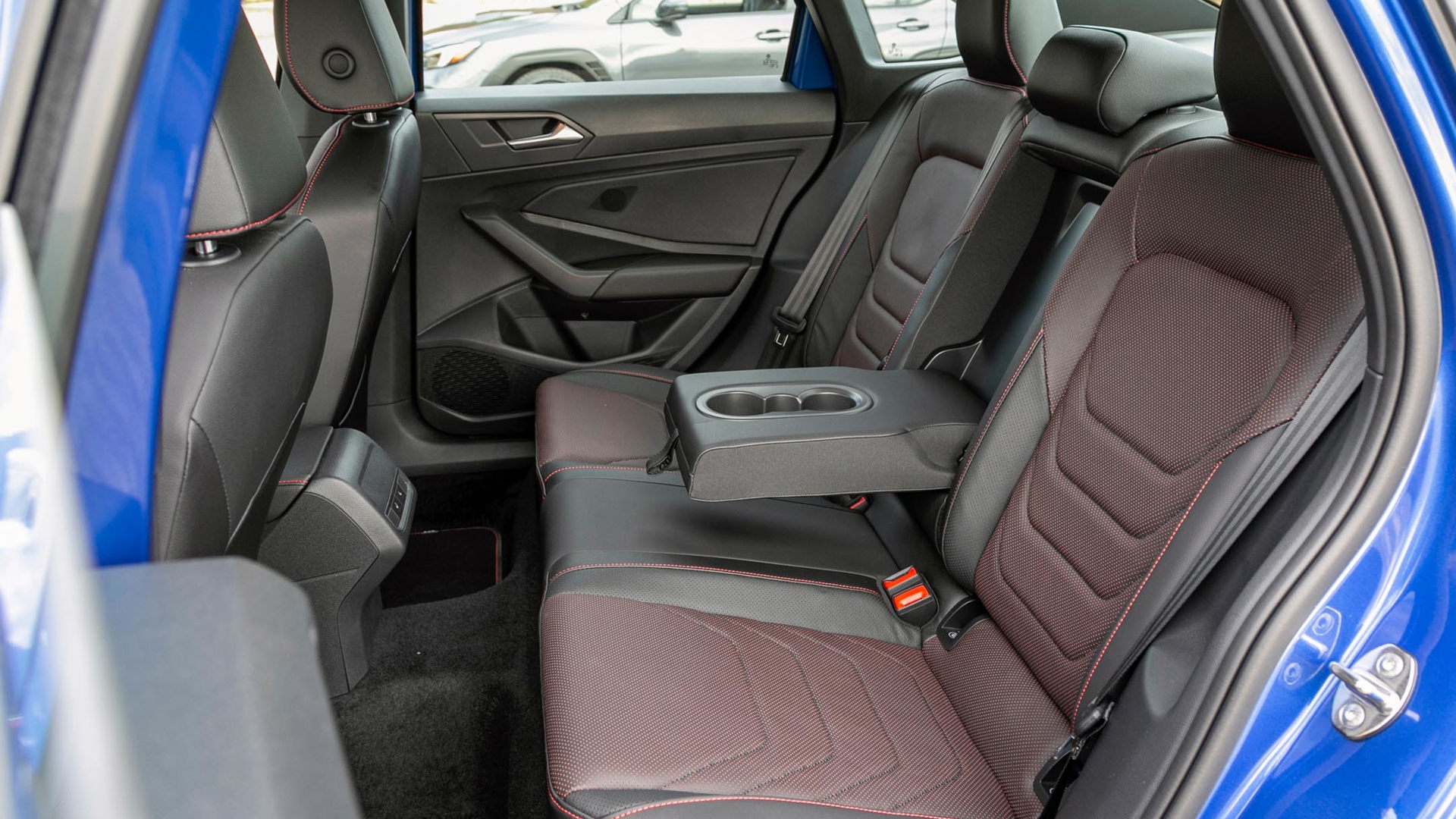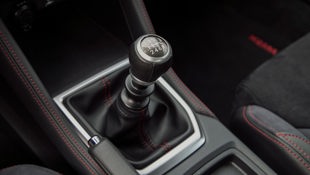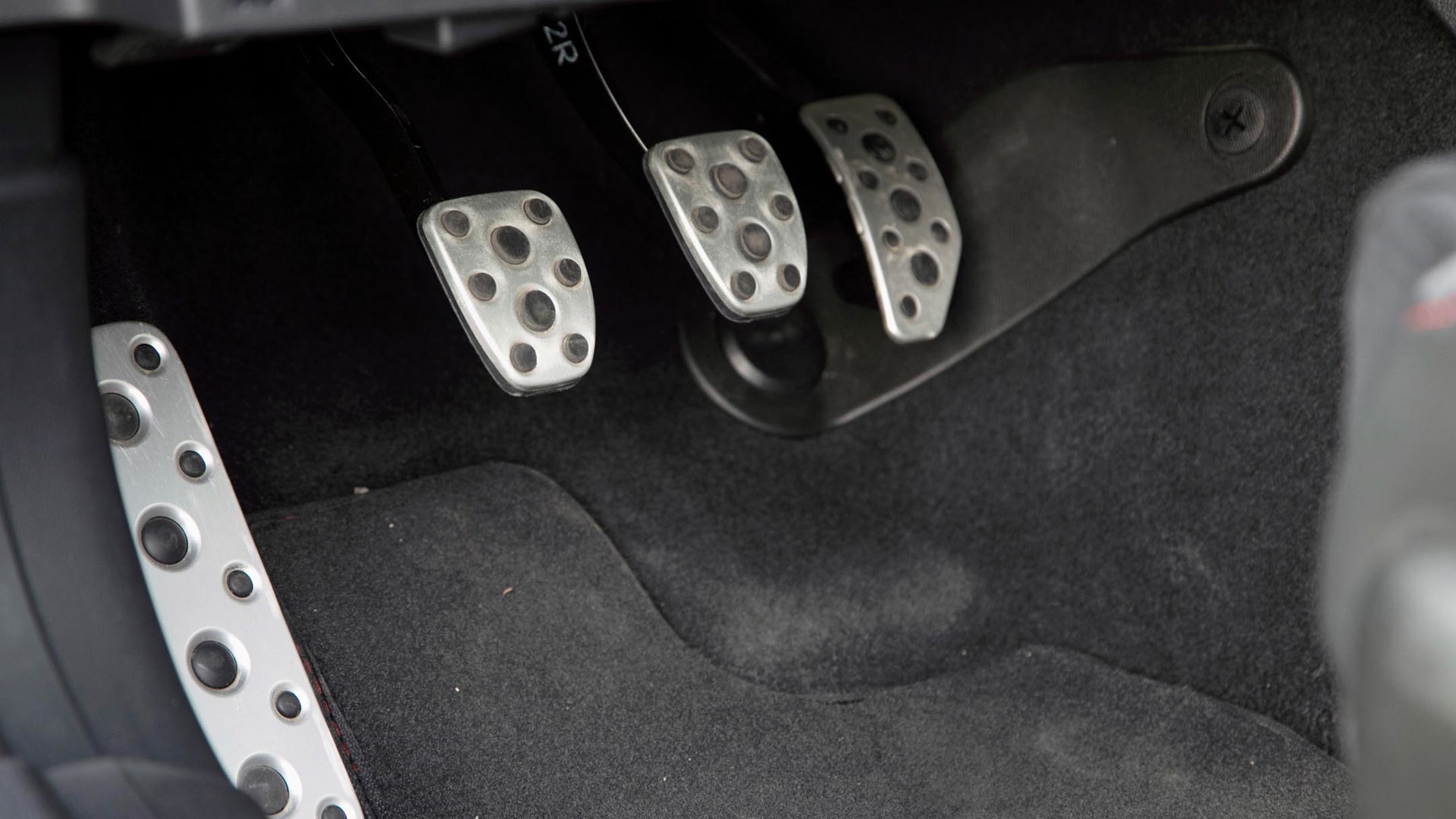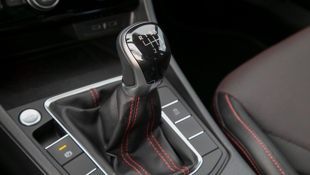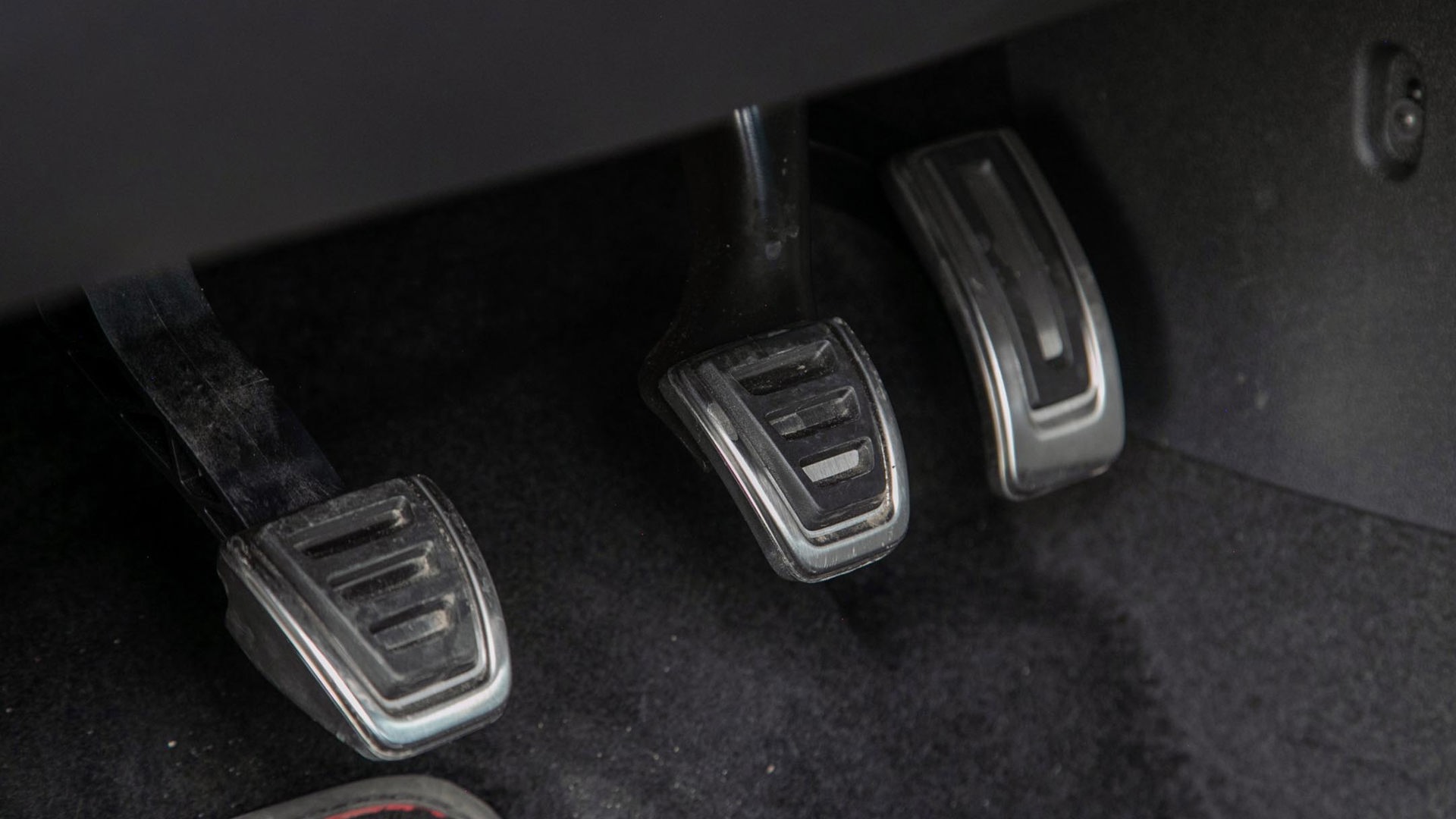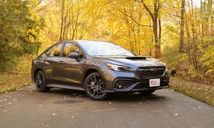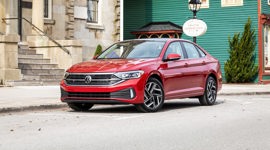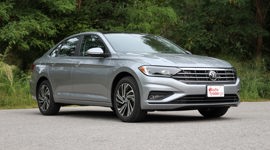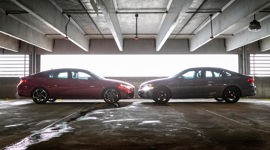Comparison Data
|
2022 Subaru WRX Sport-tech 6MT
|
2022 Volkswagen Jetta GLI 6MT
|
|---|---|
|
Engine Displacement
2.4L
|
2.0L
|
|
Engine Cylinders
H4
|
I4
|
|
Peak Horsepower
271 hp @ 5,600 rpm
|
228 hp @ 5,000 rpm
|
|
Peak Torque
258 lb-ft @ 2,000 rpm
|
258 lb-ft @ 1,500 rpm
|
|
Fuel Economy
12.7 / 9.4 / 11.2 L/100 km cty/hwy/cmb
|
9.1 / 6.4 / 7.9 L/100 km cty/hwy/cmb
|
|
Cargo Space
354 L
|
399 L
|
|
Base Price
$39,295
|
$31,895
|
|
A/C Tax
$100
|
$100
|
|
Destination Fee
$1,725
|
$1,750
|
|
Price as Tested
$41,120
|
$33,745
|
|
Optional Equipment
None
|
None
|
So, you’ve reached a stage in life where grownup responsibilities demand a sensible car for a reasonable amount of money.
I understand because I’ve reached that stage myself. But just because we’ve matured doesn’t mean we can’t still enjoy driving, right? And these days, folks like us are in luck. These two cars – the 2022 Subaru WRX and 2022 Volkswagen Jetta GLI – offer ample practicality for daily life along with a decent feature count. They also don’t cost an arm and a leg. Better still, they’re fun to drive, whether running errands, during the daily commute, or when you can break free and explore some backroads.
Volkswagen and Subaru have come at this affordable sport sedan segment with different approaches – and frankly, there’s no wrong choice between them as far as feeling a sense of pride in your purchase. Still, after spending some time commuting, getting groceries, and ripping around on some favourite rural roads, one of these two earned more smiles per gallon – er, litre.
Power
Between torque and horsepower, it’s the former that we feel most of the time during our daily drives. Torque is what shoves you into the seatback when you smash the accelerator, and to that end the WRX and GLI are very well matched, dispensing an identical 258 lb-ft. The Subaru’s larger 2.4L horizontally-opposed engine spools up at only 2,000 rpm and provides a nice, linear powerband. But Volkswagen’s smaller 2.0L four-cylinder delivers its peak torque by only 1,500 rpm, continuing through a meaty mid-range and giving the Jetta plenty of get-up and go. However, its 228 hp is down dramatically compared to the WRX’s 271 hp, making the Subaru the quicker car when its engine is wound out – but not as much as one might expect.
WRX: 8.5/10; Jetta GLI: 8/10
Driving Feel
It’s how the power is put to the pavement that separates these two more significantly. Not only does Subaru’s excellent all-wheel drive system ensure all the engine’s output is dispersed where it’s best utilized (read: where there’s the most traction), but its tires are wider and – with proper summer rubber – are significantly stickier than the Volkswagen’s all-seasons. The result is that the Subaru can be driven a lot harder and still keep rocketing ahead, whether exiting a corner or bounding over bumps, always clinging to the road.
As a front-wheel-drive car, the Jetta GLI simply can’t provide the same level of traction in adverse conditions, but it still does a decent job of putting its power down, using its standard mechanical limited-slip differential to good effect when exiting a corner. But beyond the lack of outright adhesion in less-than-perfect conditions, the GLI’s suspension is significantly softer, too, resulting in steering that’s a bit lazy by comparison. Subaru tuned the WRX’s suspension to provide more precision and communication than its predecessor – and its counterpart in this comparison.
Where the Subaru is endlessly playful, the GLI is happy to go for a spirited drive but never seems to be as committed to fun as the WRX. What’s more, the Subaru still possesses enough of its rally heritage to be just as exciting tearing up gravel roads as it is clinging to pavement, and no matter the weather, it’s always unflappable.
Also recalling ghosts of WRXs past, its stiff clutch is a bit springy, and its shifter has long, rubbery throws; and yet somehow there’s never the risk of picking the wrong gear. It’s a forgiving setup that makes it an eager companion, encouraging a driver to keep rowing up and down through its six cogs.
The GLI’s six-speed has long throws, too, but it’s not as rubbery. The gates are well defined, and its clutch is notably lighter to work with than the Subaru’s, resulting in an easier car to live with if the daily commute involves a lot of stop-and-go traffic.
WRX: 9/10; Jetta GLI: 7.5/10
Fuel Economy
Of course, always driving the WRX like it’s on a rally stage is fun, but it’s far from the most-efficient way to get around. The larger engine and drivetrain losses from the full-time nature of the all-wheel drive system conspire for inefficiency, making the Subaru’s combined average of 10.8 L/100 km notably greater than the GLI’s 7.9 L/100 km. Not only is the Volkswagen thriftier with its consumption, but it also only requires regular fuel versus the Subaru’s thirst for premium. Curiously, neither car’s optional automatic transmission improves efficiency, adding just one more reason three pedals are better than two.
WRX: 6/10; Jetta GLI: 8/10
Styling
Adult responsibility often coincides with a more conservative wardrobe, and again, these two oblige. Both cars present a traditional three-box sedan design absent of impractically oversized wheels and adolescent basket-handle rear wings. The Volkswagen’s flanks are sharply creased with an accent line that runs from the red fender badge and through the doors, terminating at the taillights. The grille gets a subtle red stripe and GLI badge that’s echoed in the bright red lower valance vents, as well as red-painted brake calipers; otherwise, the GLI is just a sportier-looking Jetta.
Subaru’s designers took an evolutionary approach to this latest WRX, with the grille a bit larger, headlights a bit pointier, and SUV-style fender flares that caused a universal gasp amongst commenters who flooded enthusiast forums with disdain. While the functional flares will take a pounding from rocks and grit flung up during gravel road rally stages, they’re an eyesore on what would’ve otherwise been a nice update to the WRX. Ordering a WRX in black – or grey, like the tester – will mercifully downplay those plastic appendages.
Fortunately, the flares aren’t visible from the driver’s seat, and inside is all contemporary Subaru, dominated by the massive vertical screen. It’s otherwise a fairly straightforward design with some plastic carbon fibre trim and red stitching being the only flourishes amongst the practical but rather chintzy materials over most everything else.
The GLI’s interior is decidedly posher, from its leather seats to the fancier finishes used throughout. Even still, and in spite of its digital gauge cluster, the Jetta’s cockpit is starting to look dated.
WRX: 6.5/10; Jetta GLI: 8/10
User Friendliness
Of course, dated looks usually mean a cockpit that’s more user-friendly than the most fashionable contemporary layouts, and that’s the case here. The GLI’s knobs for climate control are simple to use, even with gloved hands, as are the hard buttons for heated seats and knobs for volume and tuning. The infotainment system connects wirelessly to smartphones, and there’s a wireless charger – and it all worked flawlessly during testing. If there’s an ergonomic complaint, it’s with Volkswagen’s fiddly haptic controls on the steering wheel that can be oversensitive at times, but VW has apparently heard enough complaining about them and is starting to revert back to hard buttons in some models for 2023.
The driving position is fine in the GLI, too, but the WRX is better. The view out in all directions is exceptional from the Subaru’s driver seat. Little things like mounting the door mirrors lower and further back open up huge sightlines in the window corners. Unfortunately, the WRX’s infotainment system proved glitchy, often breaking contact with my iPhone despite being connected via a cable (there’s no wireless charger or connectivity here). Similar to VW, Subaru has also listened to consumer feedback and has adjusted the tedious multi-step process to deal with the seat heaters for 2023.
WRX: 7/10; Jetta GLI: 7.5/10
Practicality
As four-door, five-passenger sedans, both cars offer decent practicality for daily life. The Subaru is more generous with front-seat leg- and headroom, but its backseat space falls short of the Volkswagen’s. The WRX’s rear headroom is tight enough that even this average-height tester found his hair brushing the headliner, which wasn’t the case in the GLI.
The Volkswagen’s trunk, at just under 400 L, is notably bigger than the Subaru’s cargo hold. What’s more, the GLI’s rear seats fold forward easier thanks to levers mounted in the trunk space, but the seats don’t lie as flat as the Subaru’s do.
WRX: 7.5/10; Jetta GLI: 7/10
Comfort
For front-seat occupants, at least, the WRX offers good comfort. Its faux suede-covered seats are grippy, well-bolstered, and supportive, but supple enough to be comfortable during long days behind the wheel. That Subaru makes the headrests adjustable for both height and forward lean helps more body types find an optimal driving position.
There are no complaints about the GLI’s seats, either, offering great lateral support, but without overly-constrictive bolstering. Having them both heated and cooled adds comfort in all seasons. Even in its sportiest setting, the Volkswagen’s adaptive suspension is softer than the Subaru’s, and it does a better job keeping both road and wind noise at bay.
WRX: 7/10; Jetta GLI: 8/10
Features
While the rear seats are heated in both cars, it’s clear Subaru put emphasis on sportiness versus creature comforts when building the WRX. Despite this being a range-topping Sport-tech, the faux-suede seats are about as posh as it gets here. There’s a sunroof, onboard GPS, dual-zone climate control, and a premium sound system; but those features are also found in the mid-trim Sport models.
The GLI also features onboard navigation and a (much larger) sunroof, plus a premium audio system with satellite radio. Volkswagen’s digital cockpit, adaptive suspension, and drive modes, and the configurable ambient LED lighting, make it feel like a more premium offering.
WRX: 7/10; Jetta GLI: 7.5/10
Safety
It’s in the safety department where the Volkswagen’s feature count really impresses. The Jetta GLI is loaded up with all the usual mandated safety features, but also comes standard with lane-keeping assist, front autonomous emergency braking, parking sensors, and adaptive cruise control.
Subaru, a company lauded for its advanced safety suite, hasn’t figured out how to effectively integrate the system with manual-transmission cars. As such, adaptive cruise control and lane-keeping aren’t available here unless the WRX is ordered with the optional automatic transmission. To its credit, Subaru does a good job of integrating its blind-spot detection warning lights into the side mirrors where they’re both big and bright enough to catch the driver’s attention, even at a glance. Like the GLI, the WRX comes with automatic high-beam control for its LED headlights.
WRX: 6.5/10; Jetta GLI: 7.5/10
Value
Subaru’s WRX offers a lot of performance for its sub-$40,000 cost, but the Sport-tech trim represents a relatively poor value. Unless you’re hell-bent on having signal repeaters in the mirrors, WRX embroidered into the headrests, or the orange paint colour that’s only offered on the top trim, you’d be smarter to opt for the mid-trim Sport that’s $4,000 cheaper yet offers the best of what the WRX offers. Plus, at around $35,000, the WRX Sport rings in roughly the same as the less powerful Honda Civic Si, and just below the Hyundai Elantra N, neither of which offer all-wheel drive.
Volkswagen has gotten extremely aggressive with the GLI’s pricing, offering the car you see here at $31,895, with the only option being an excellent automatic transmission for those needing a two-pedal car. Given the content included in the GLI as standard equipment, its MSRP is a screaming deal compared to anything else in the segment.
Of course, only a small percentage of buyers will walk into a dealership with a fistful of bucks and pay cash for either of these cars. At the time of this writing, Subaru’s advertised finance rates were notably lower than Volkswagen’s, making the monthly payments very similar between these two cars, all other factors being equal. For those looking to lease, the WRX has consistently earned recognition for its value retention making it cheaper to lease than the GLI.
WRX: 7/10; Jetta GLI: 8/10
The Verdict
Buyers shopping for a modestly-priced performance sedan are spoiled for choice these days with Subaru, Volkswagen, Hyundai, and Honda all on the scene. There truly isn’t a right or wrong pick, but rather different types of sport sedans to suit the tastes and specific needs of buyers.
Between our two testers, the differences in personality were significant with the 2022 Volkswagen Jetta GLI representing a handsome, well-equipped, efficient, and comfortable machine that offers a small helping of sportiness. Buyers prioritizing style and luxury in their sporty sedan should hit up the VW store.
The 2022 Subaru WRX, on the other hand, ups the performance quotient without making the car punishing to live with every day. In fact, thanks to its excellent traction, willing engine and all-wheel drive format, the WRX is more fun to live with as a performance car for everyday use. And it’s arguably even more fun when the real-world throws potholes, gravel roads, or snow storms at it, making it the only car like it for all Canadian conditions. Combined with comfy seats and a decent stereo, the WRX has enough to win over this enthusiast and make it the pick of the two and a car I’d truly enjoy driving every day.
